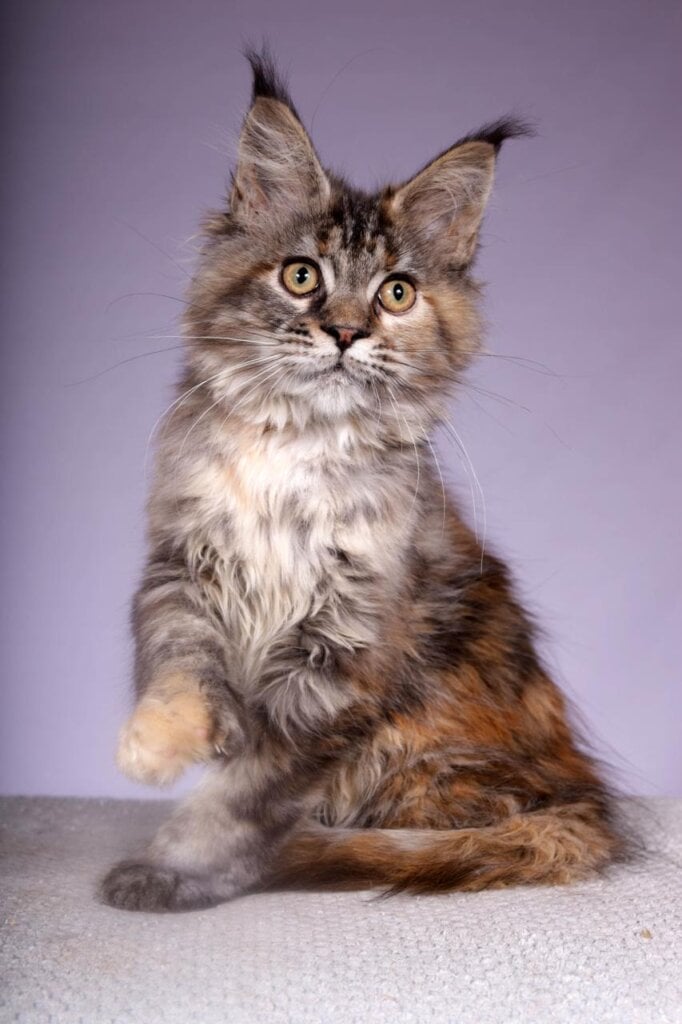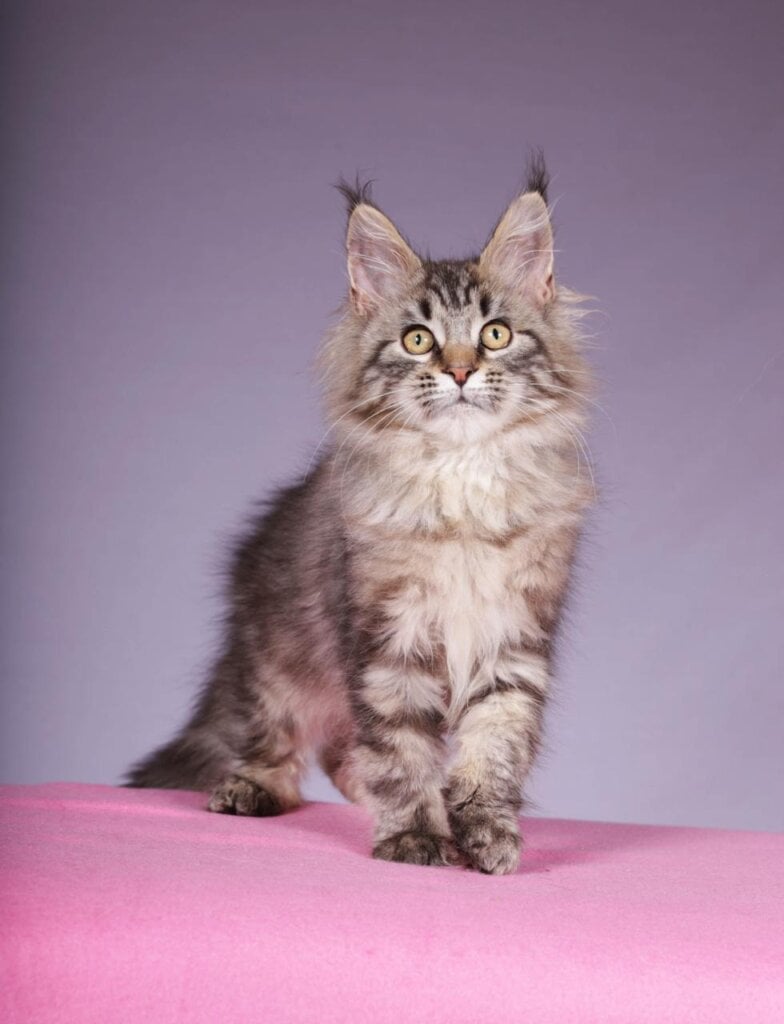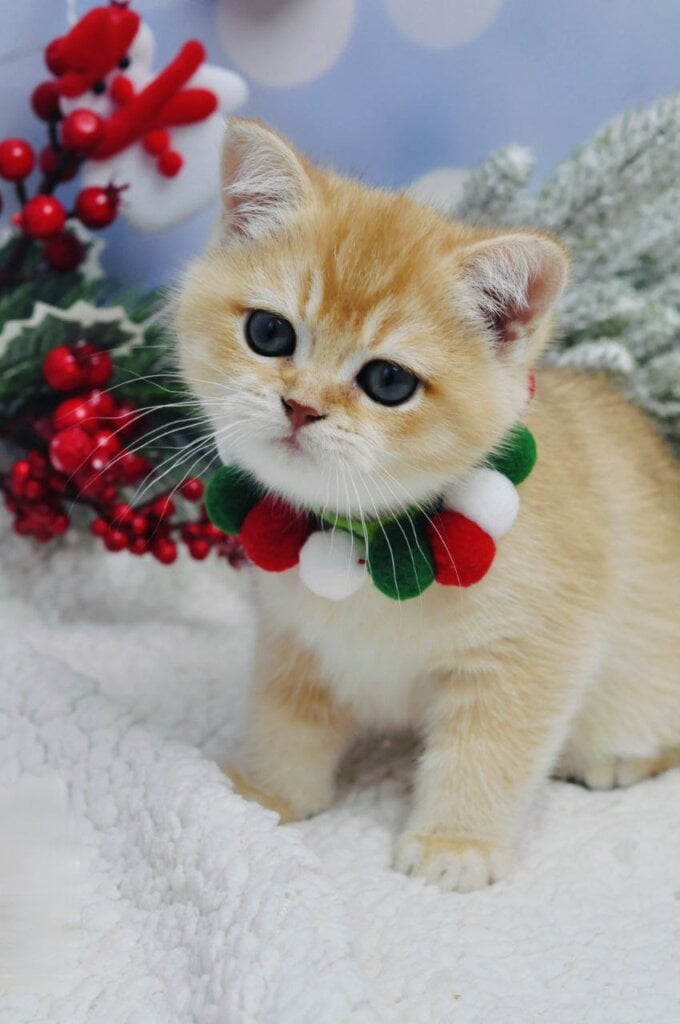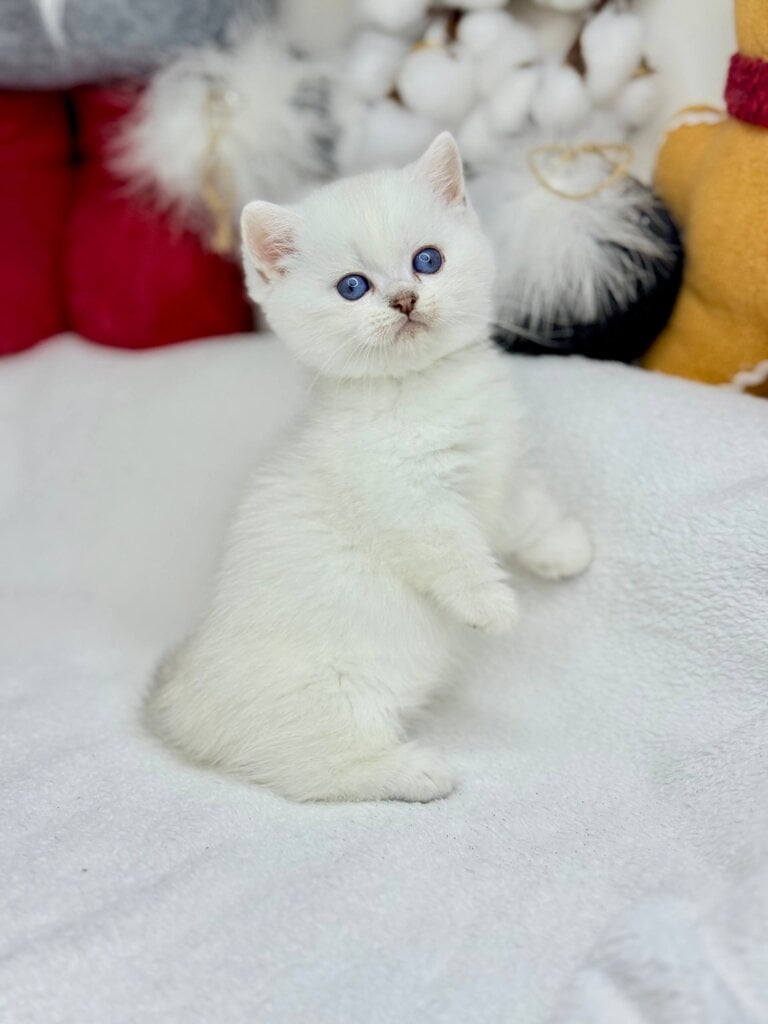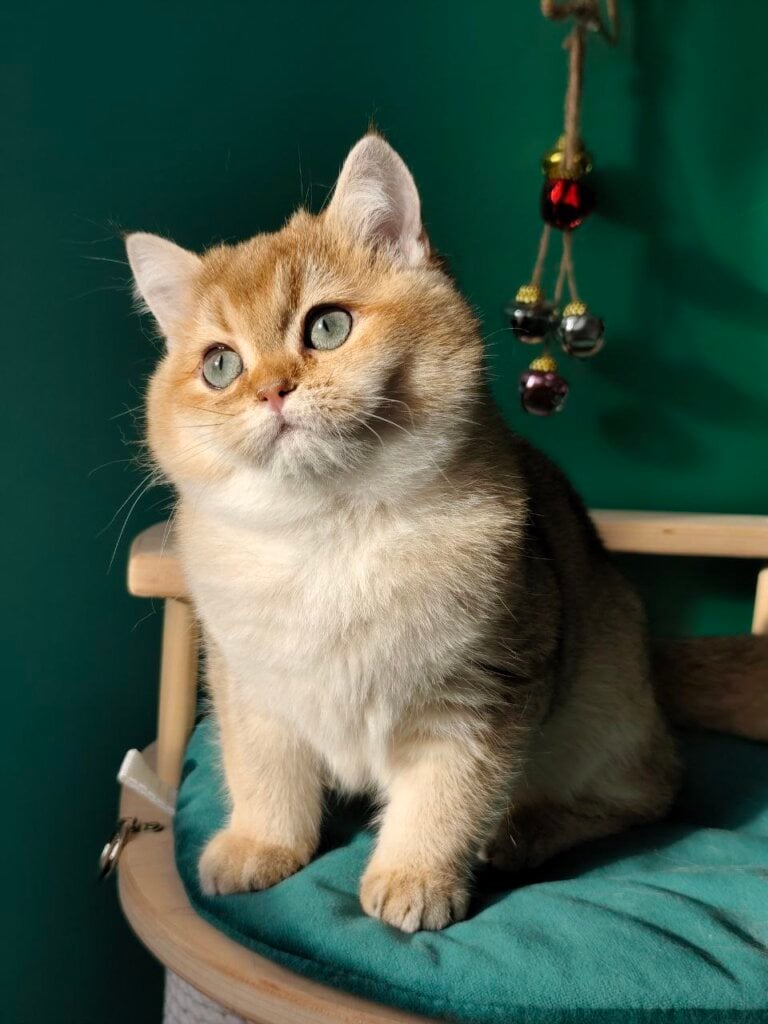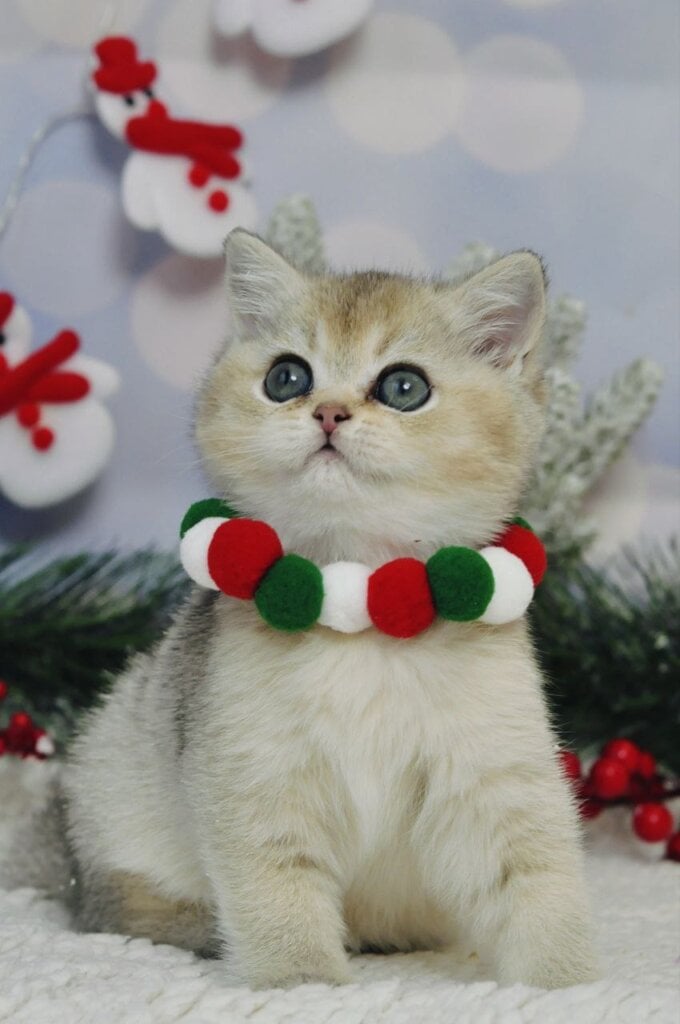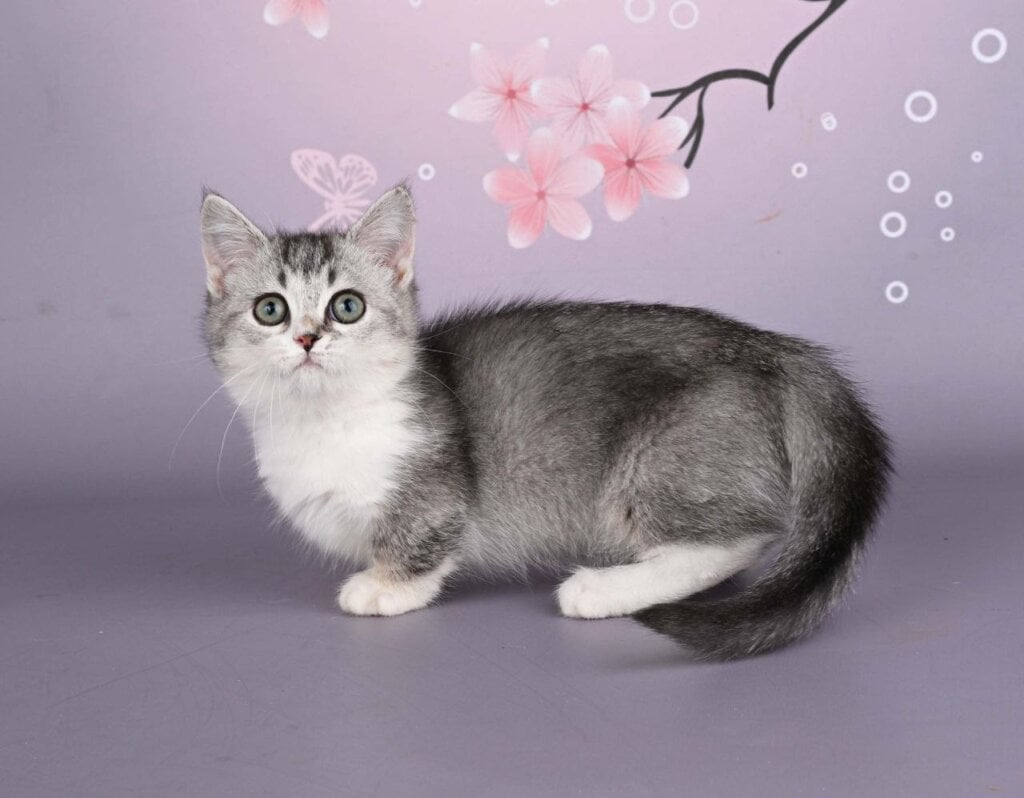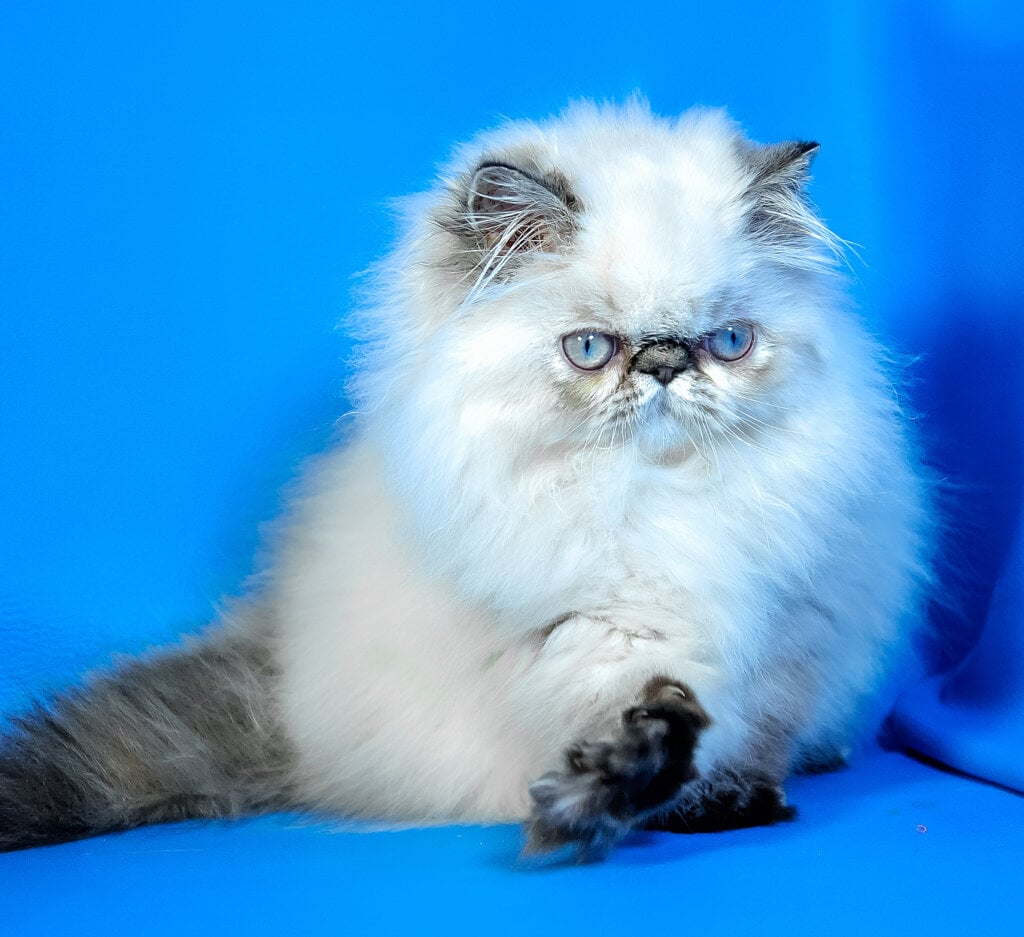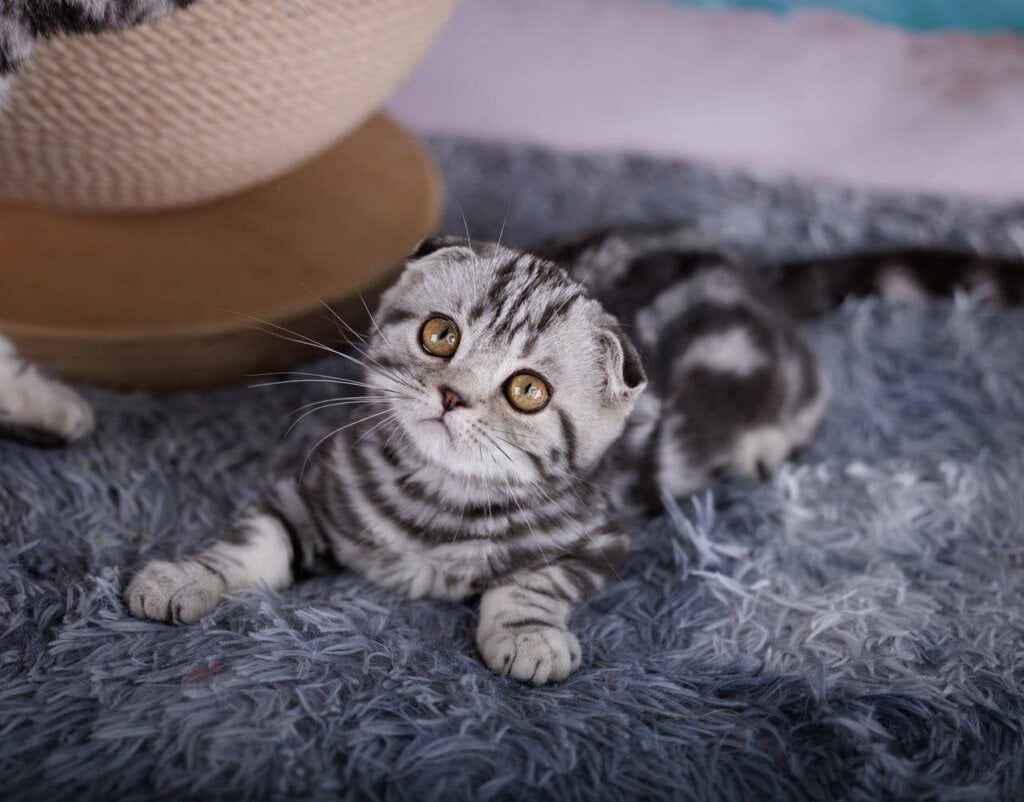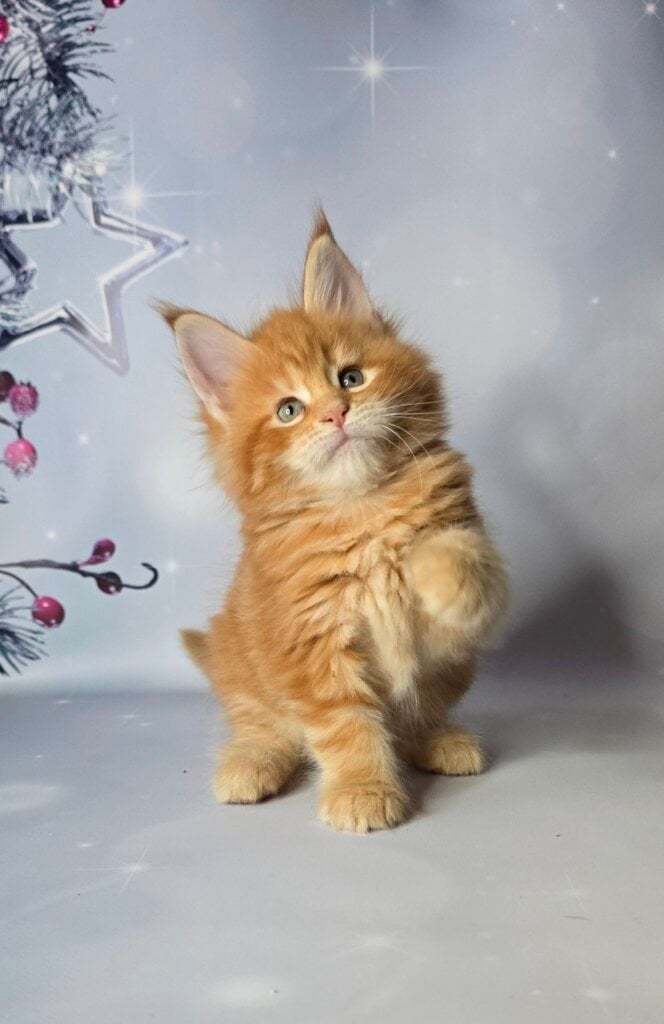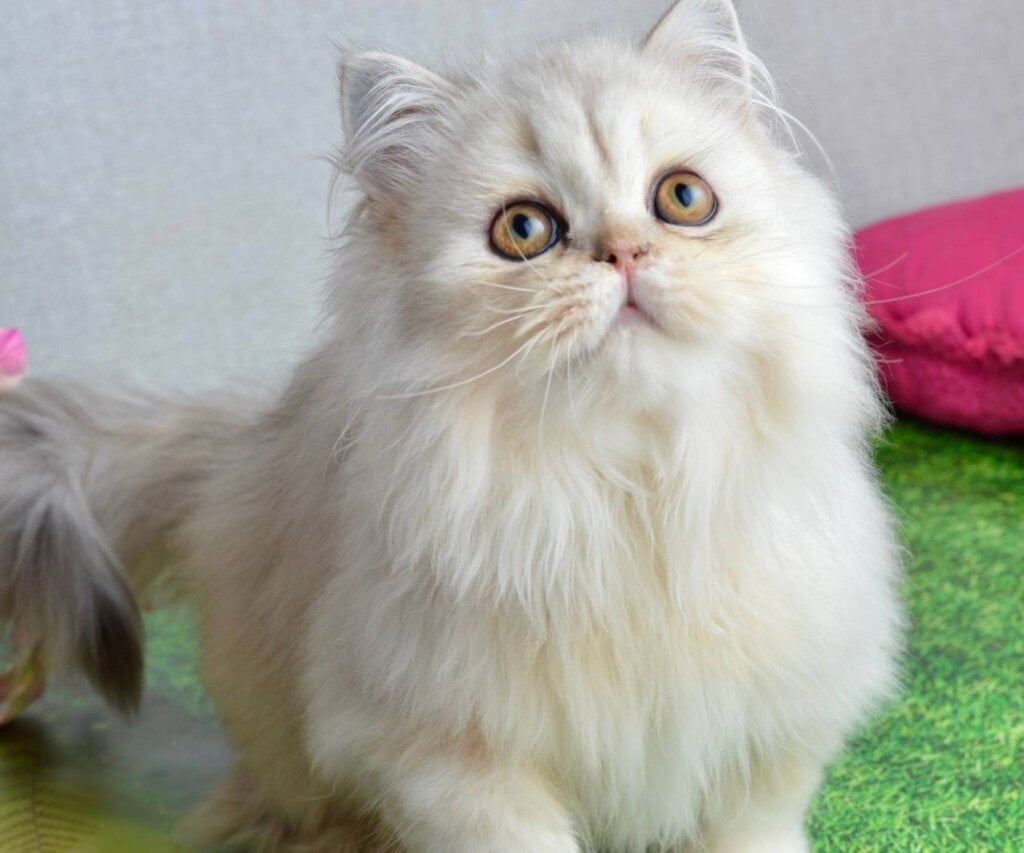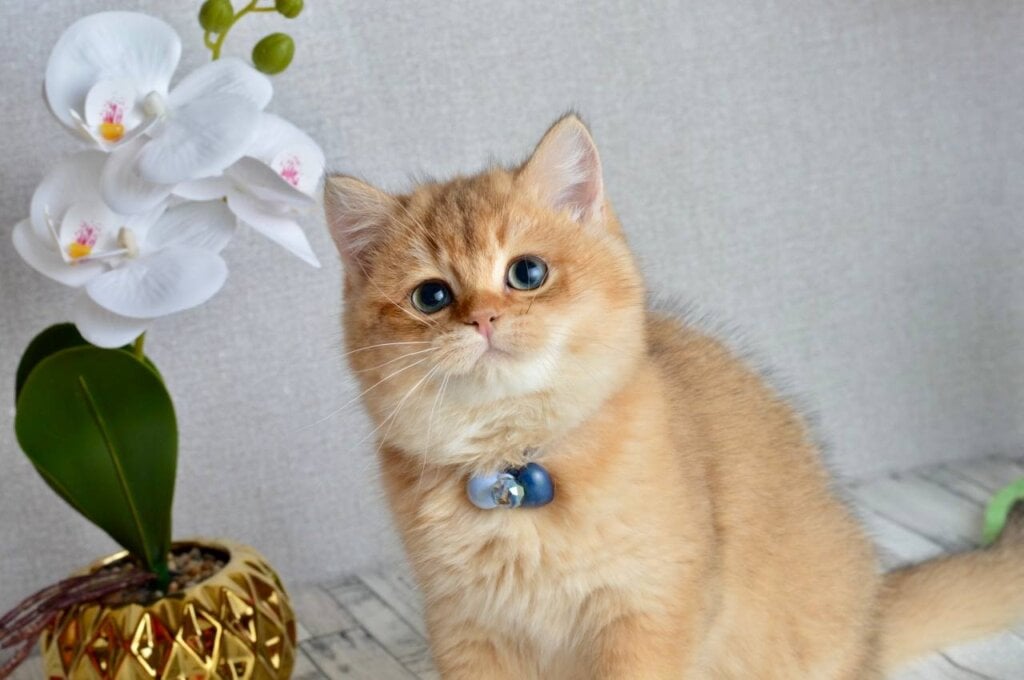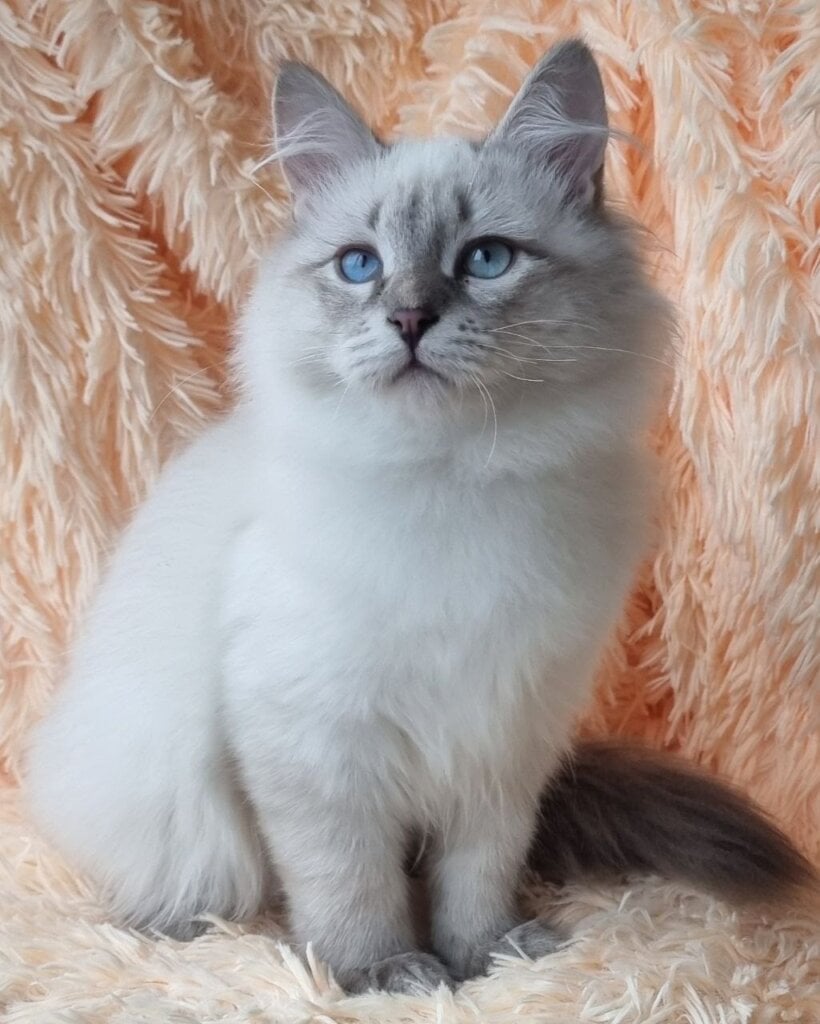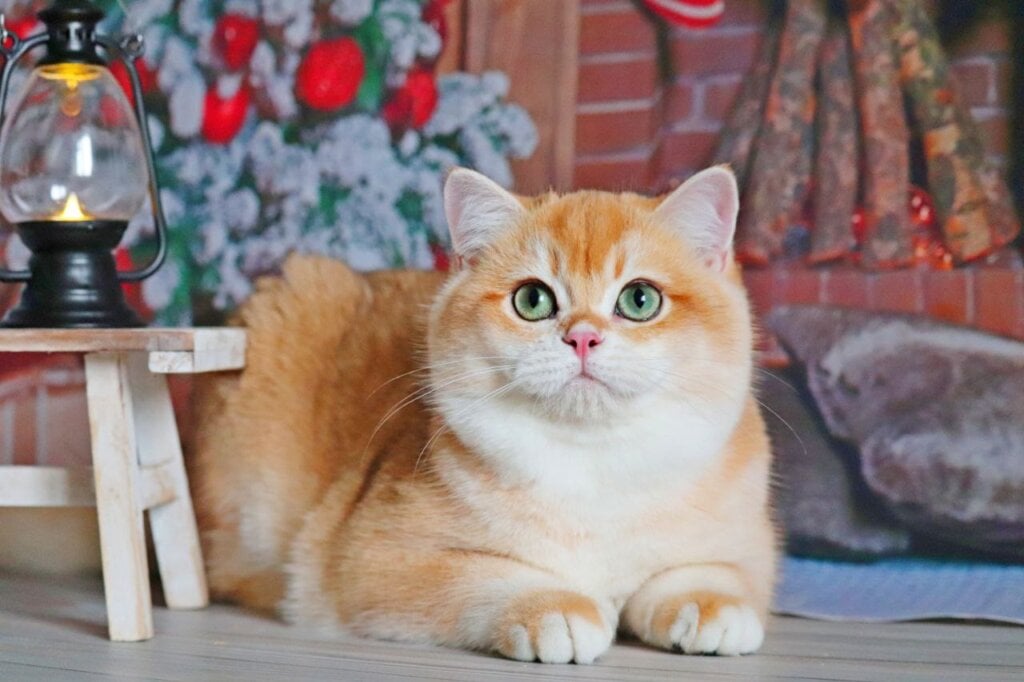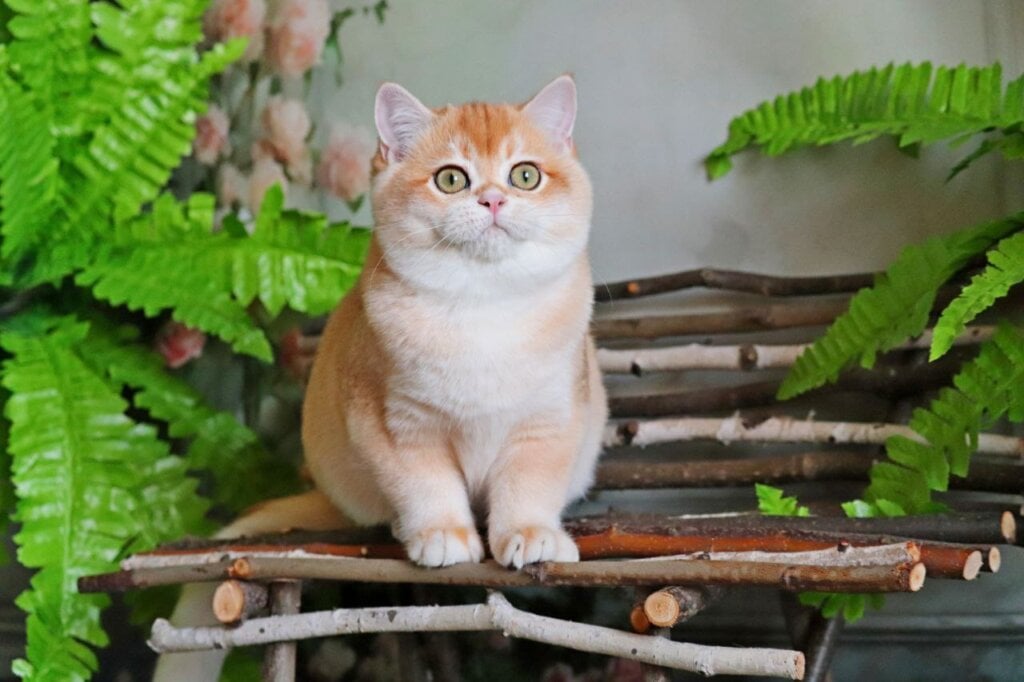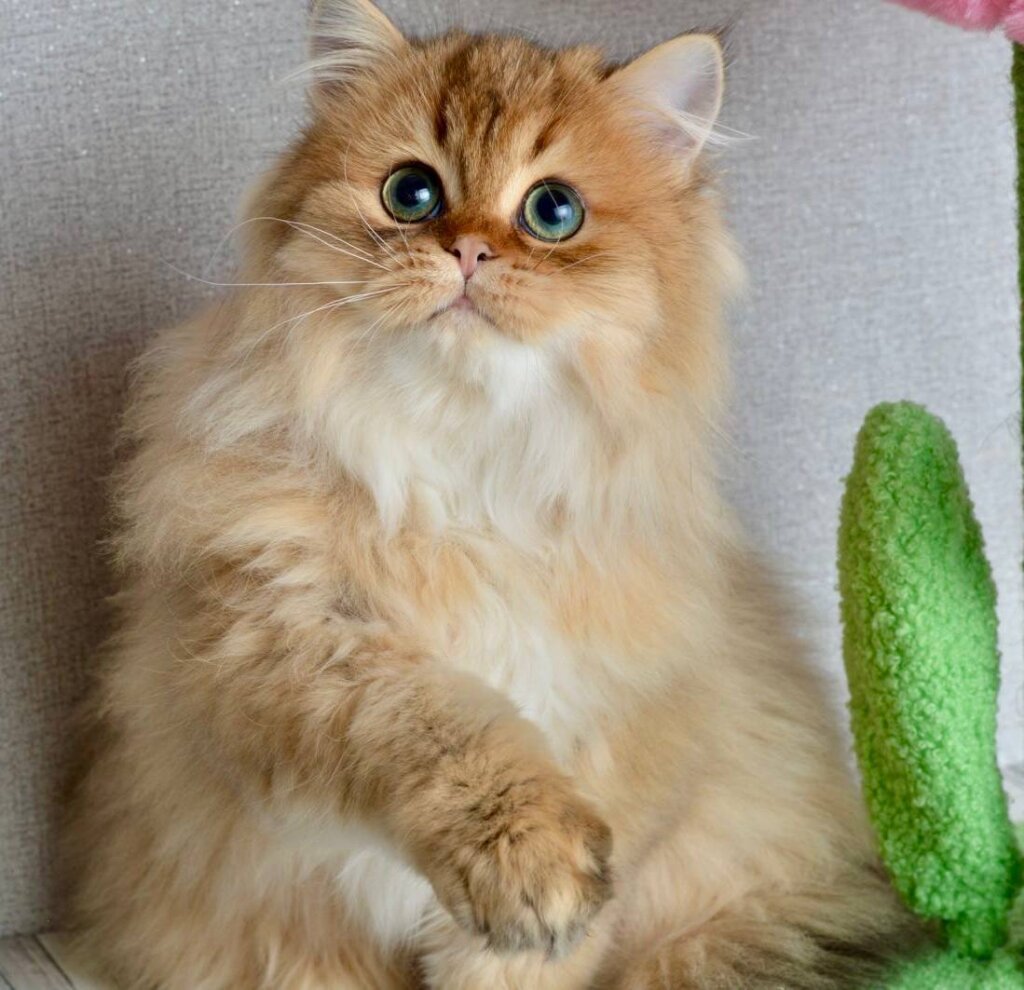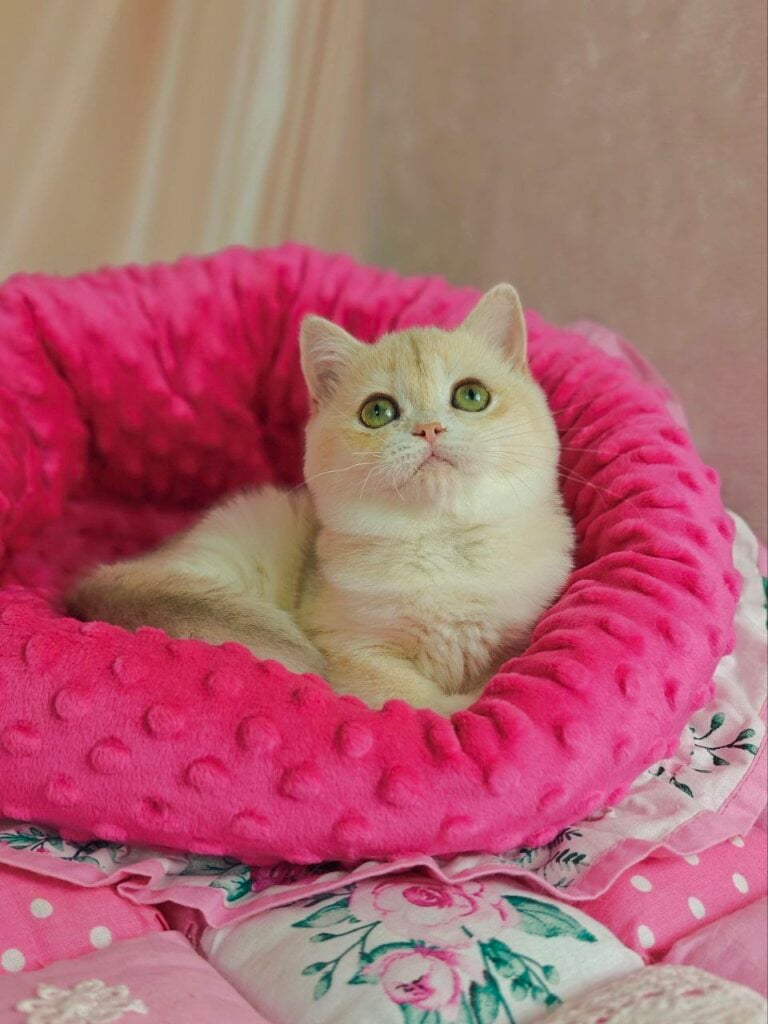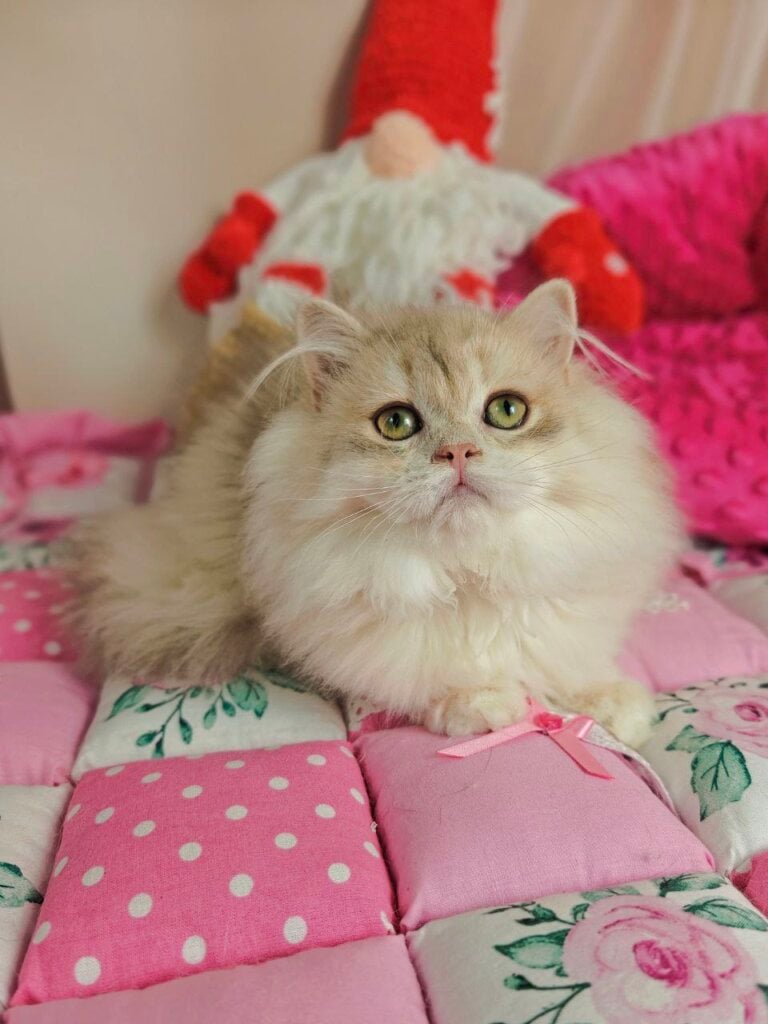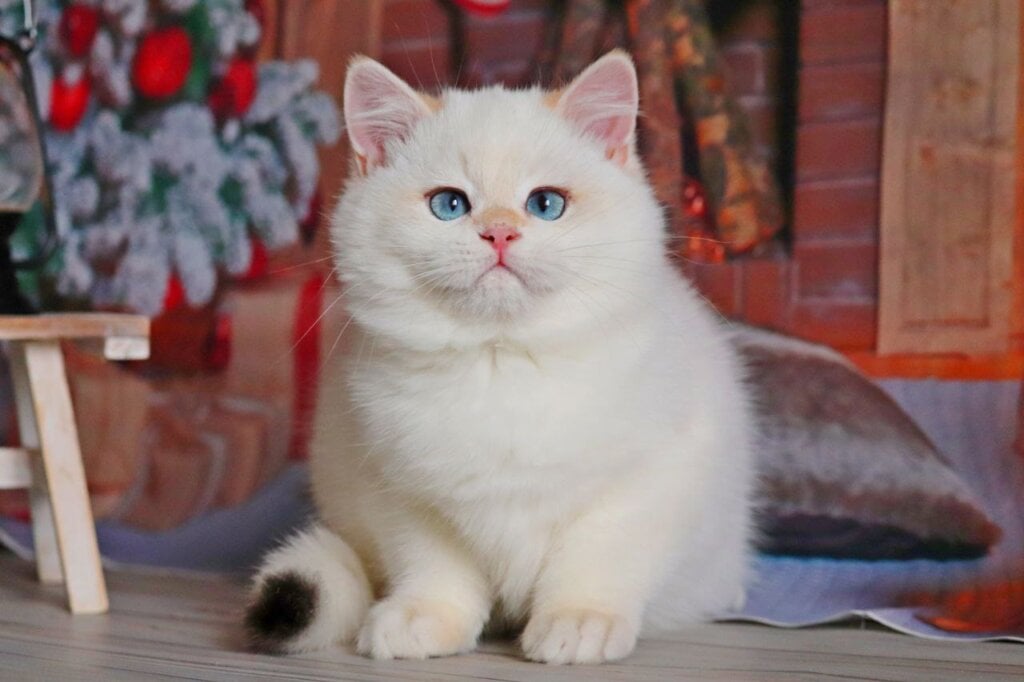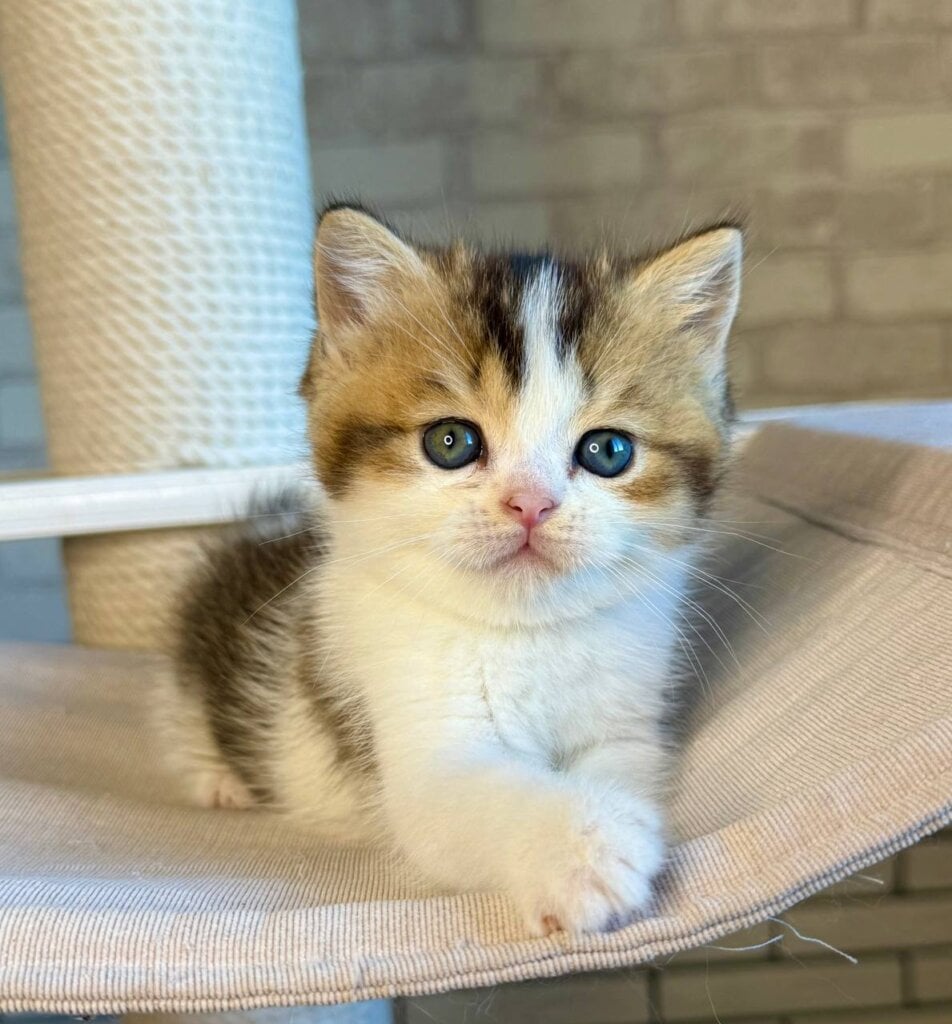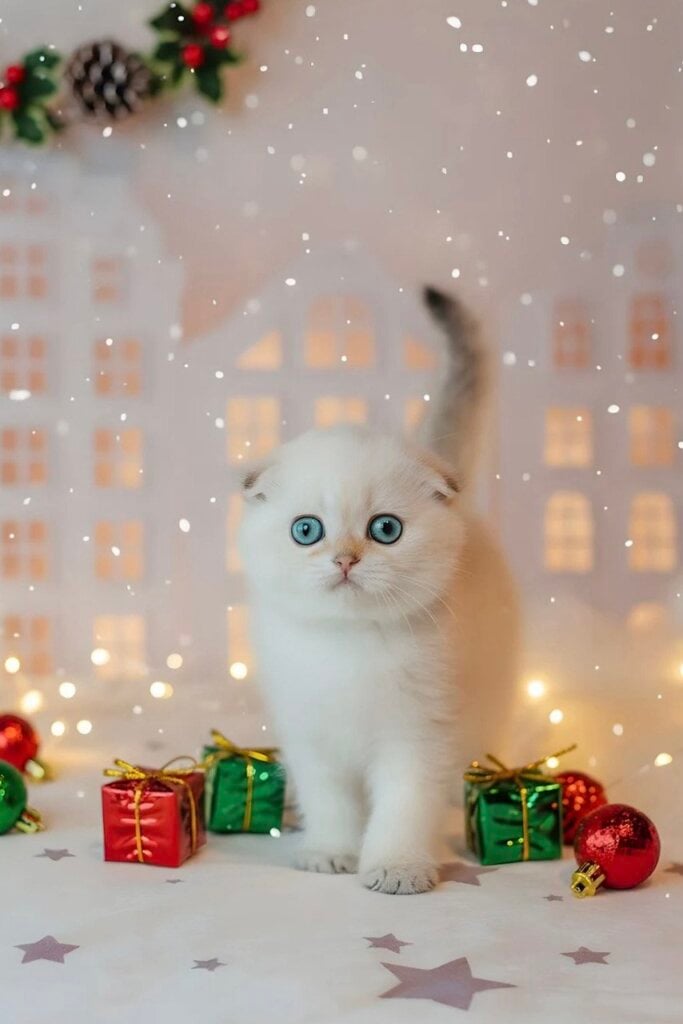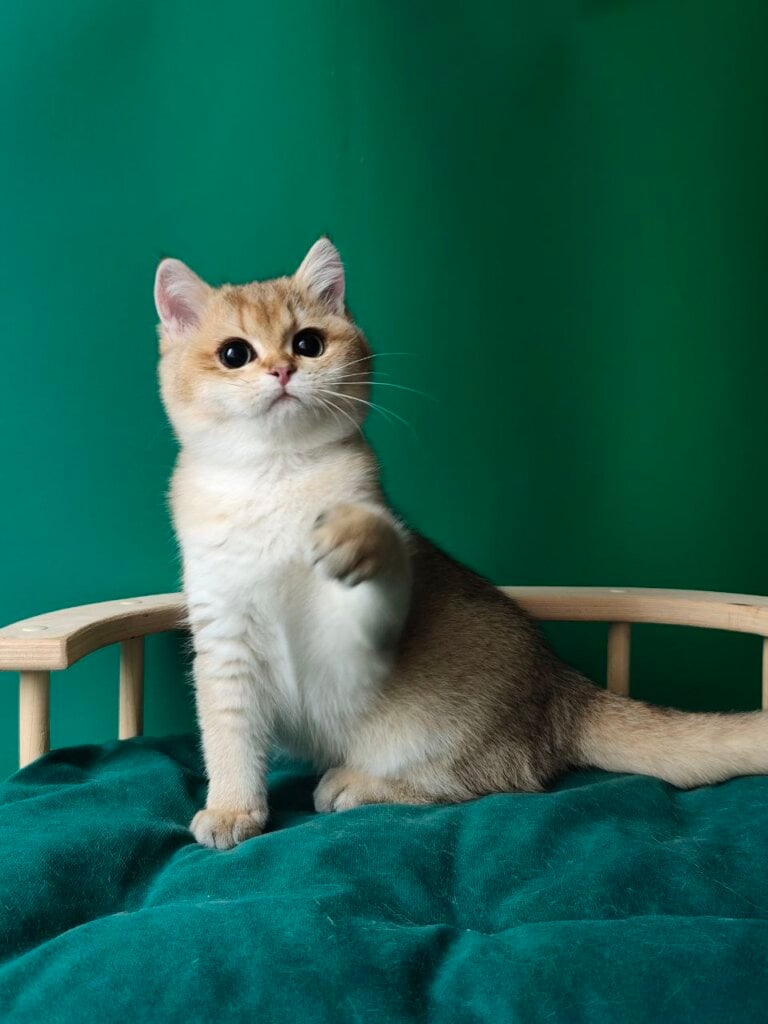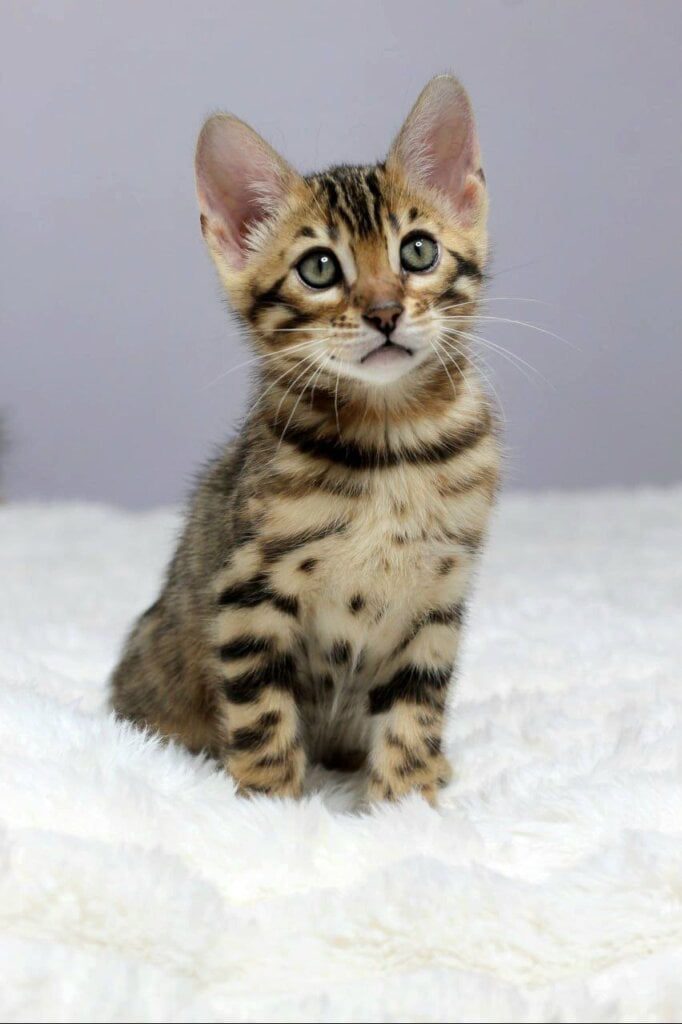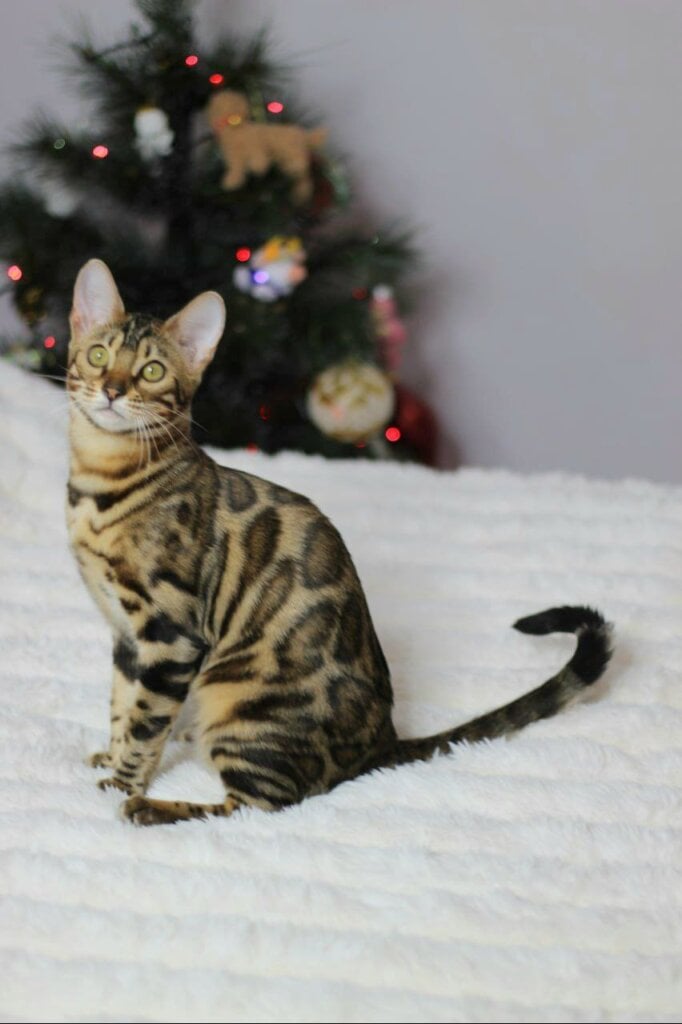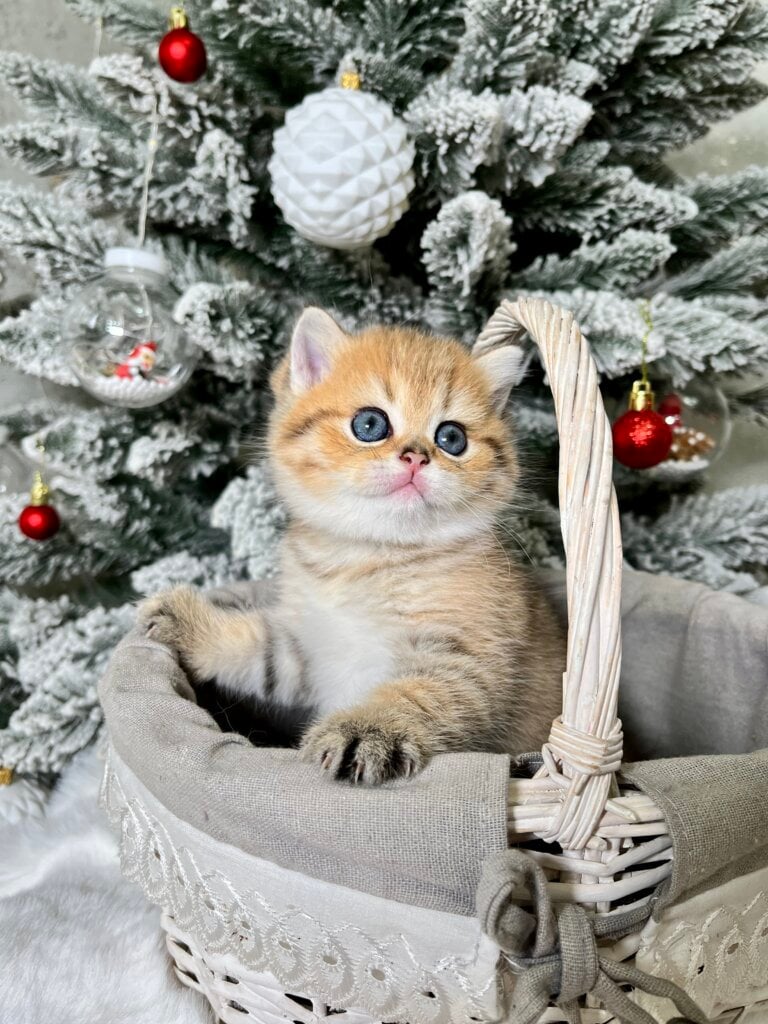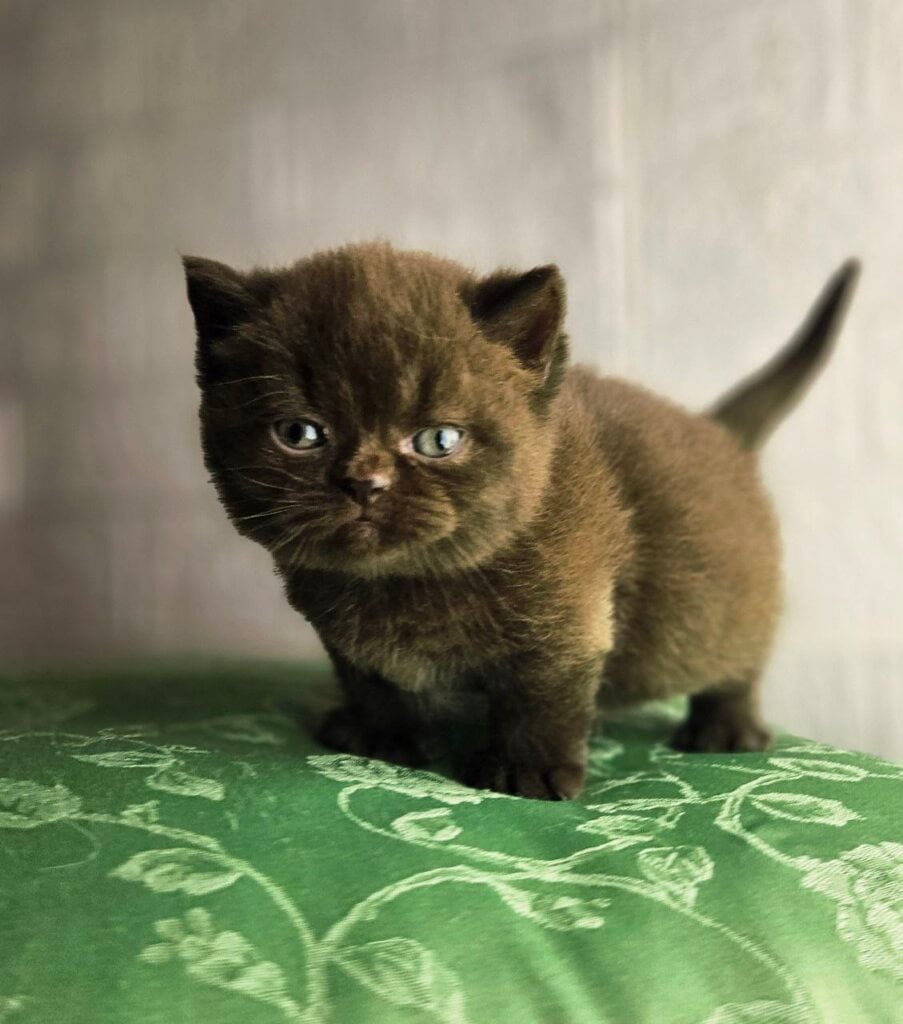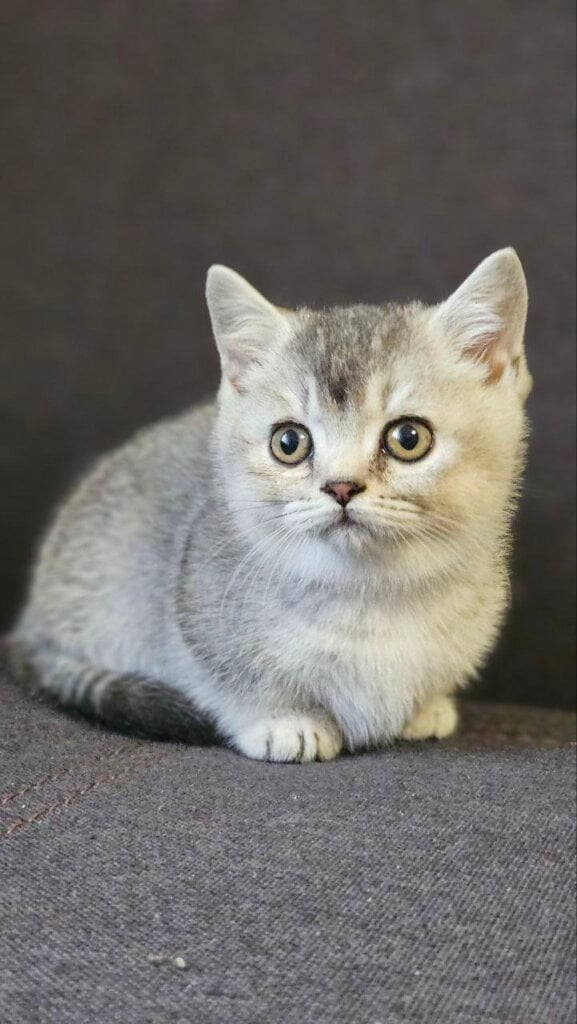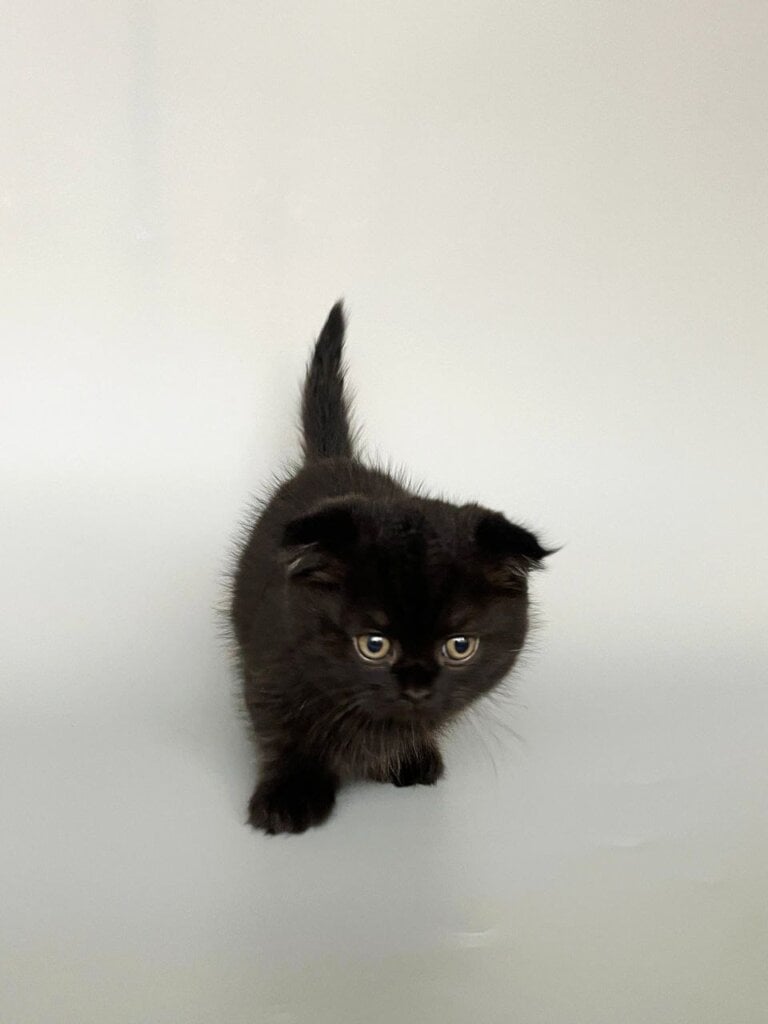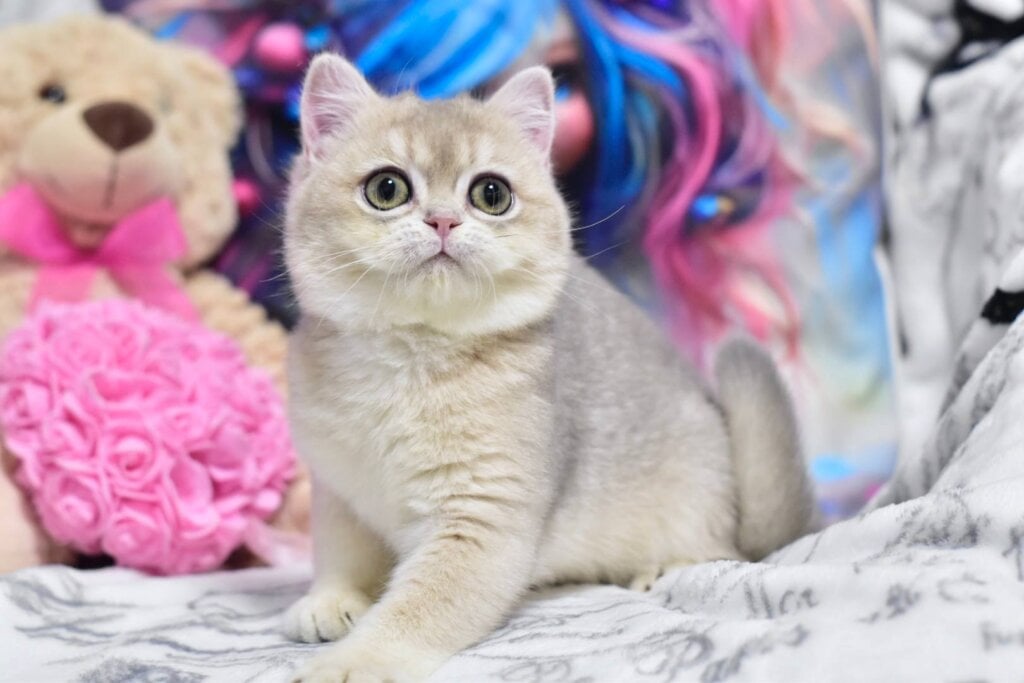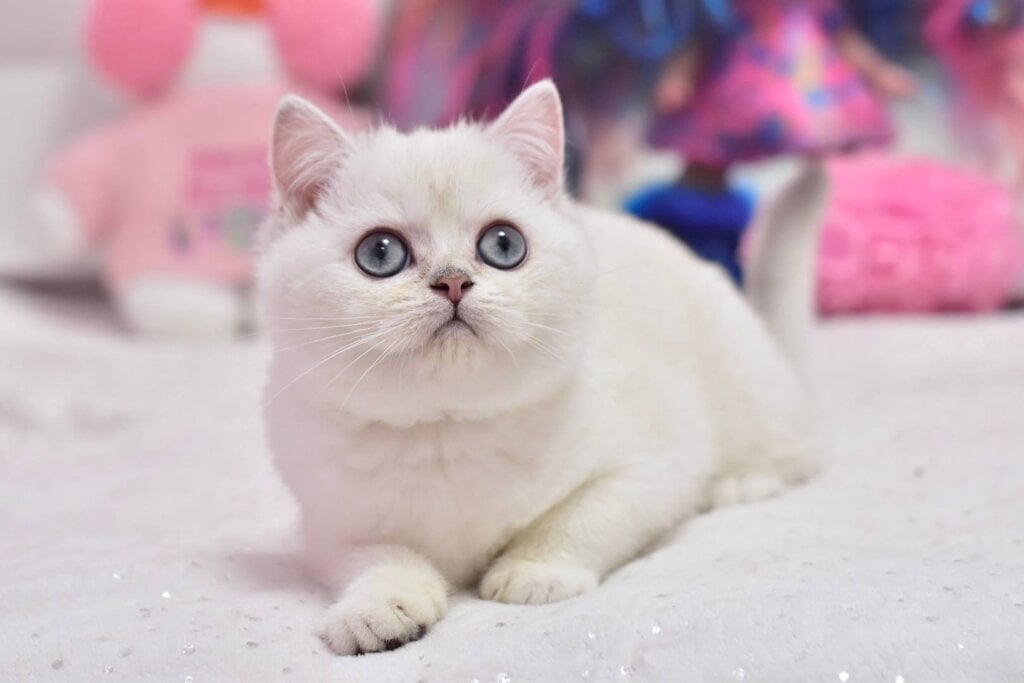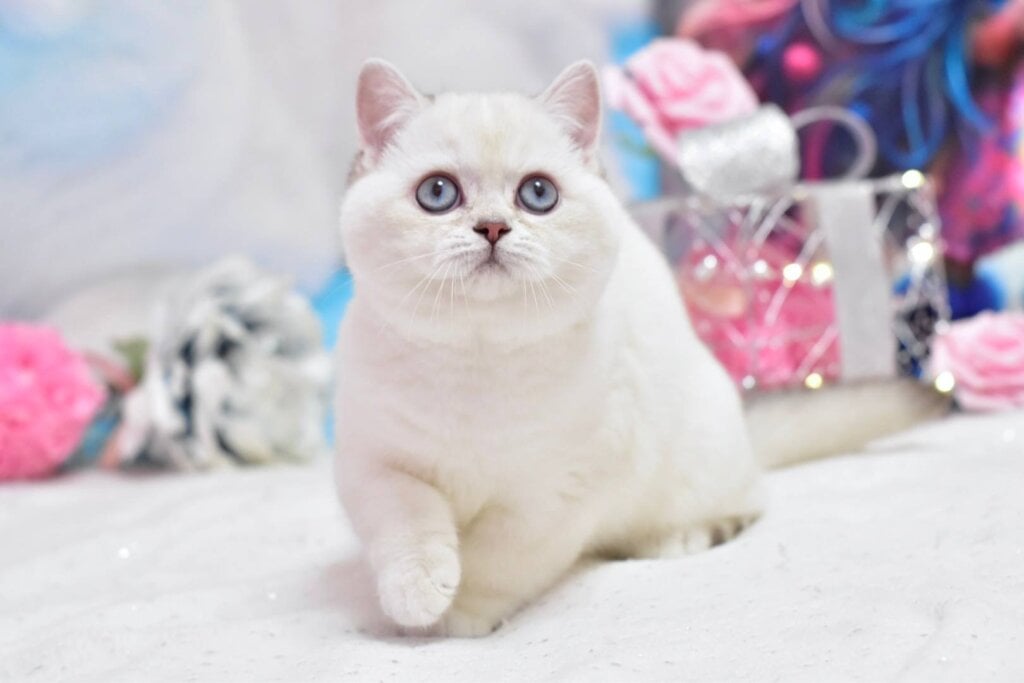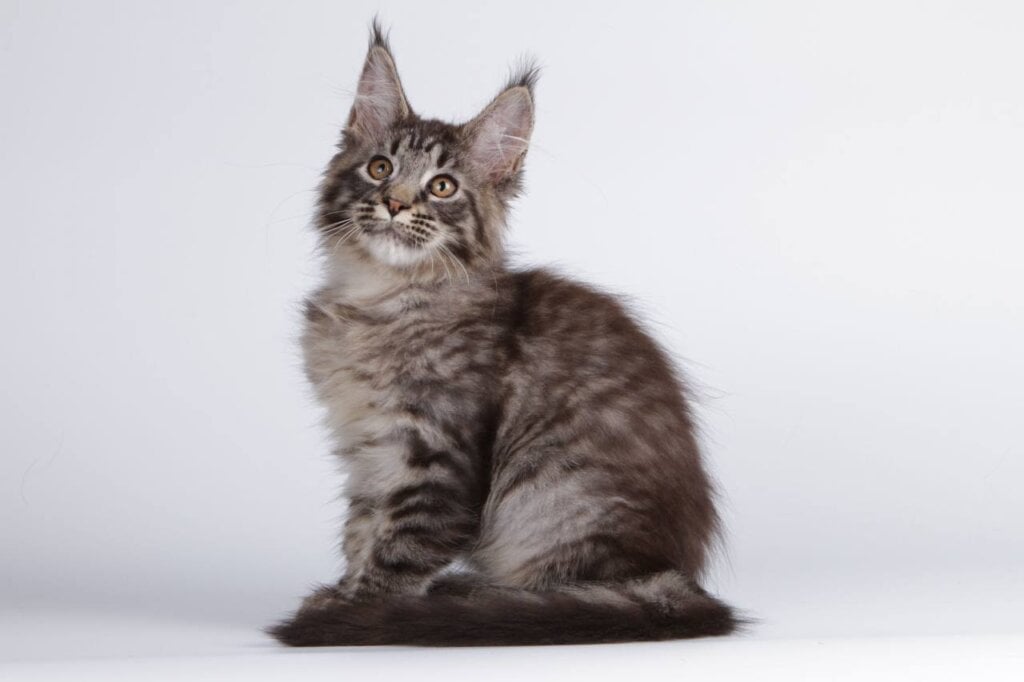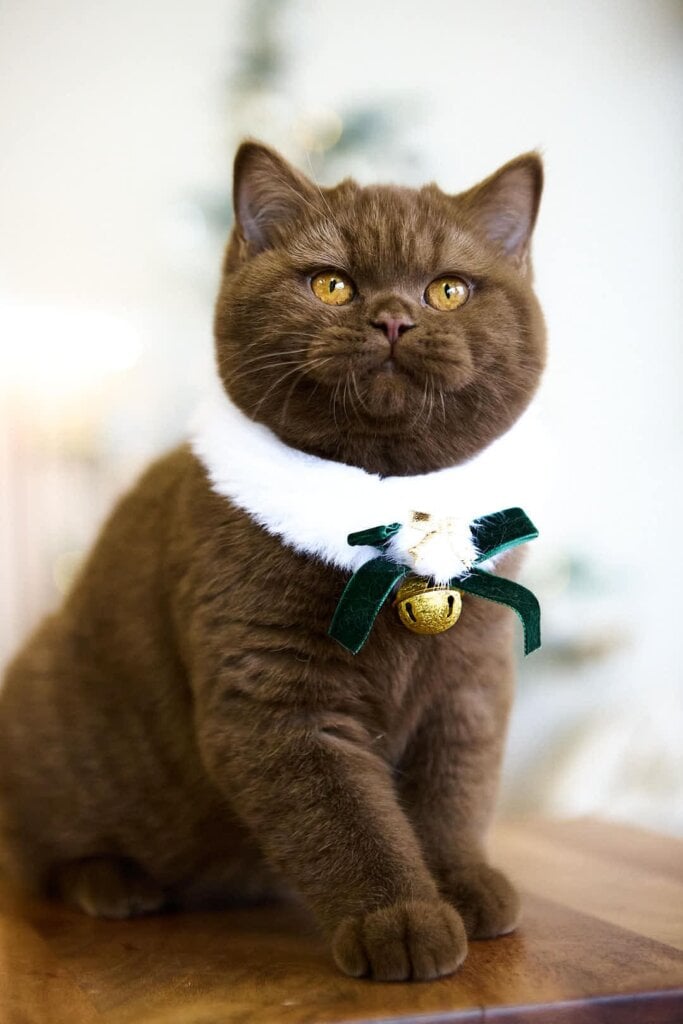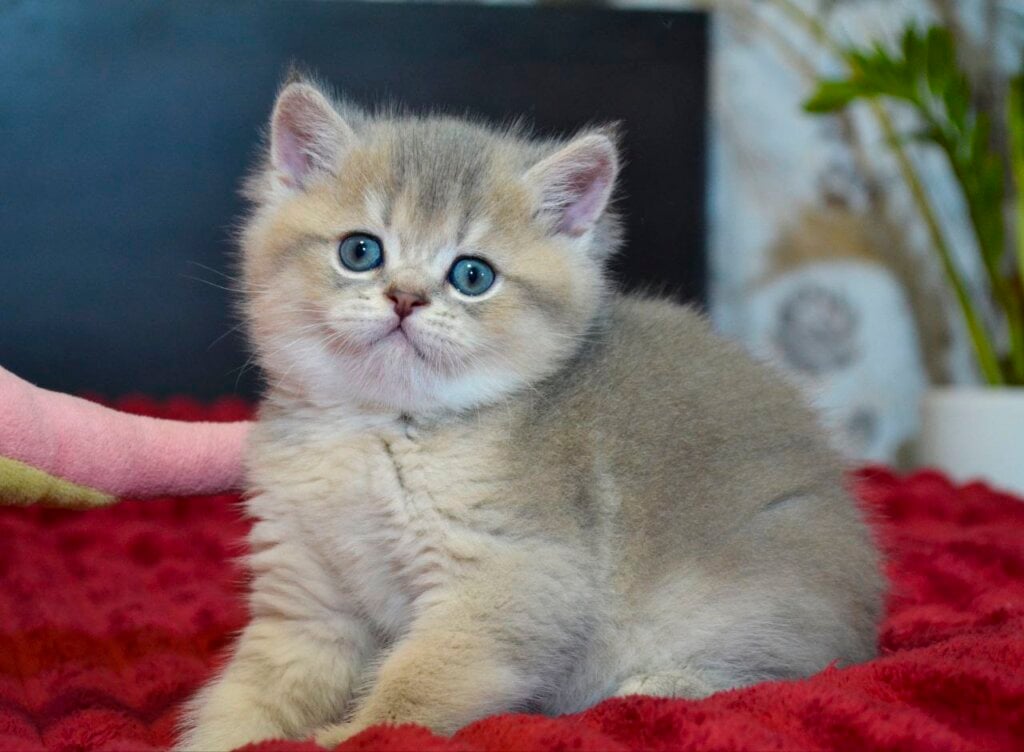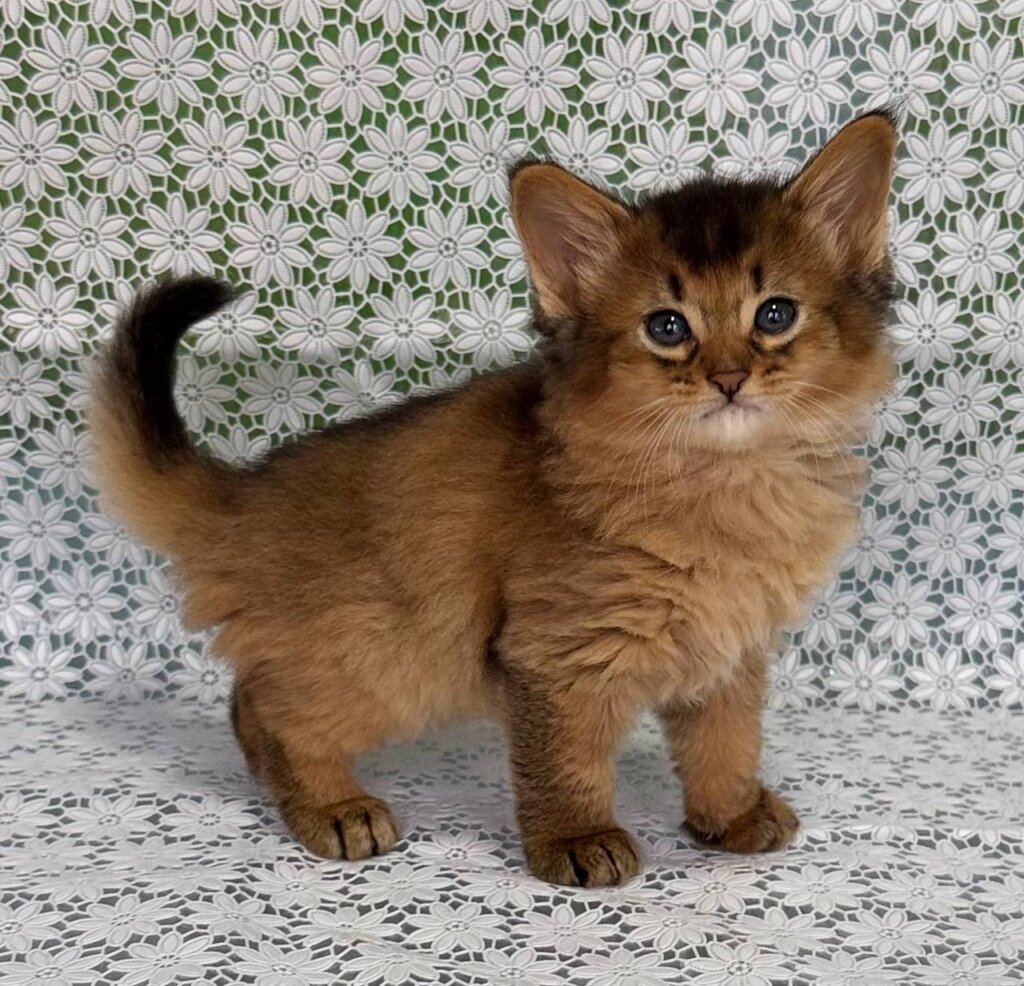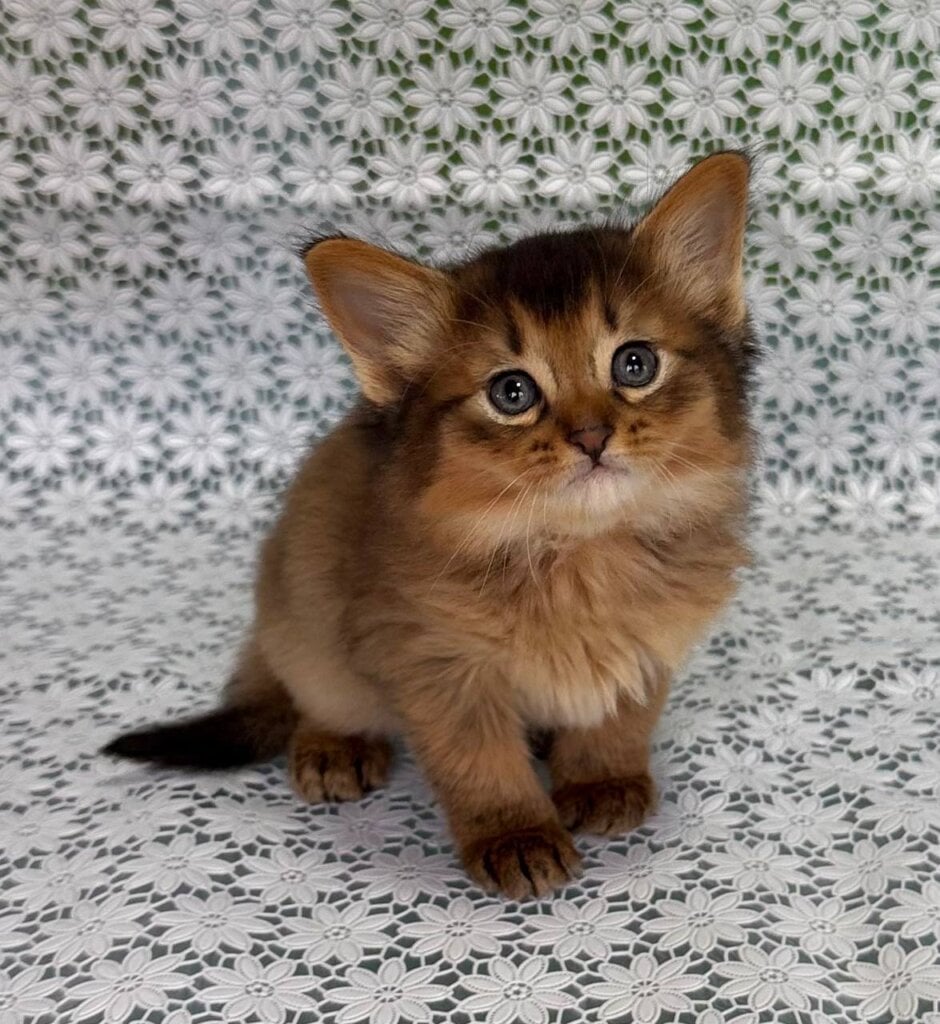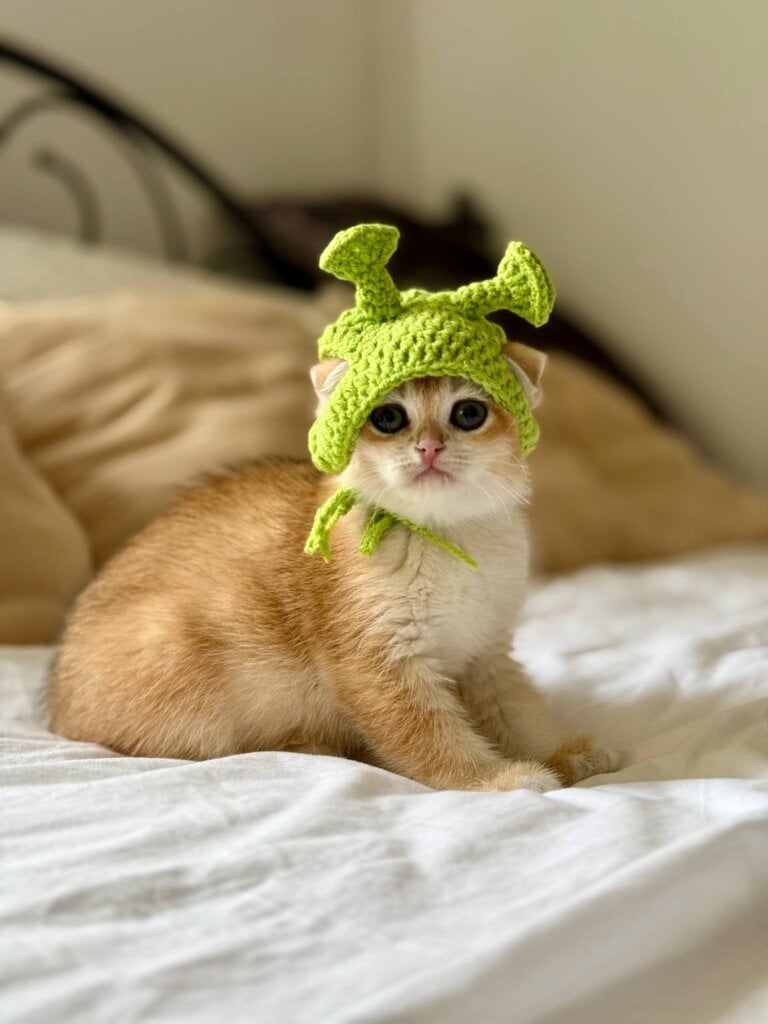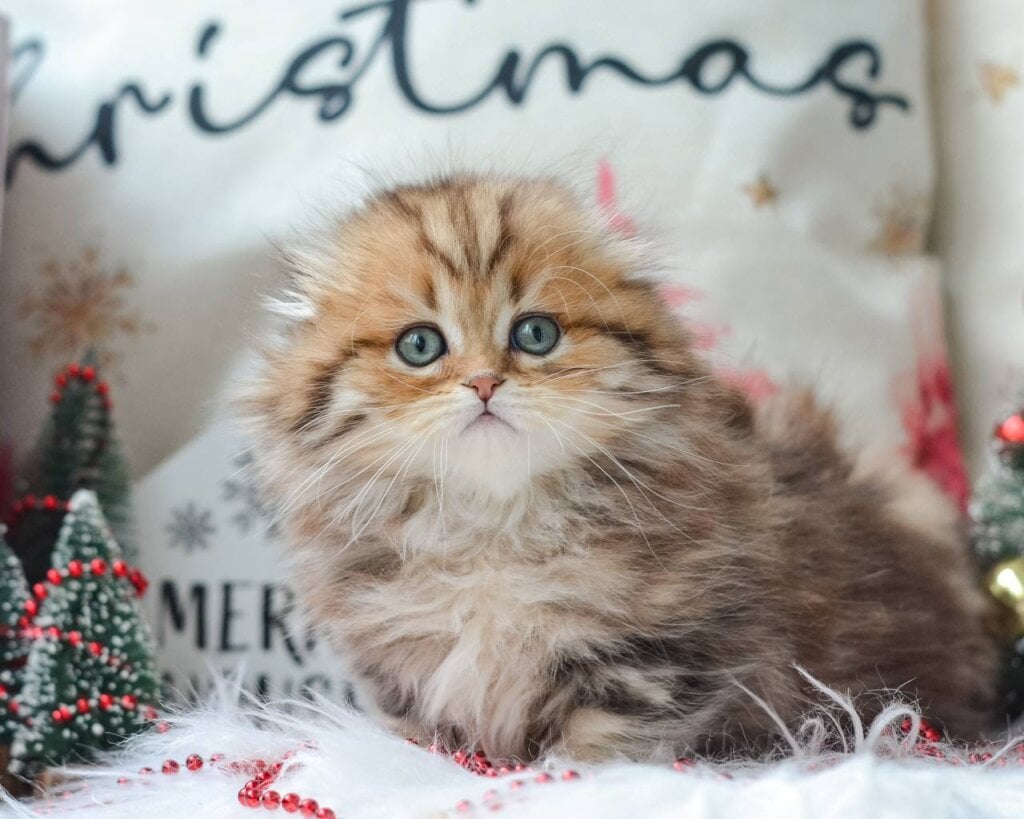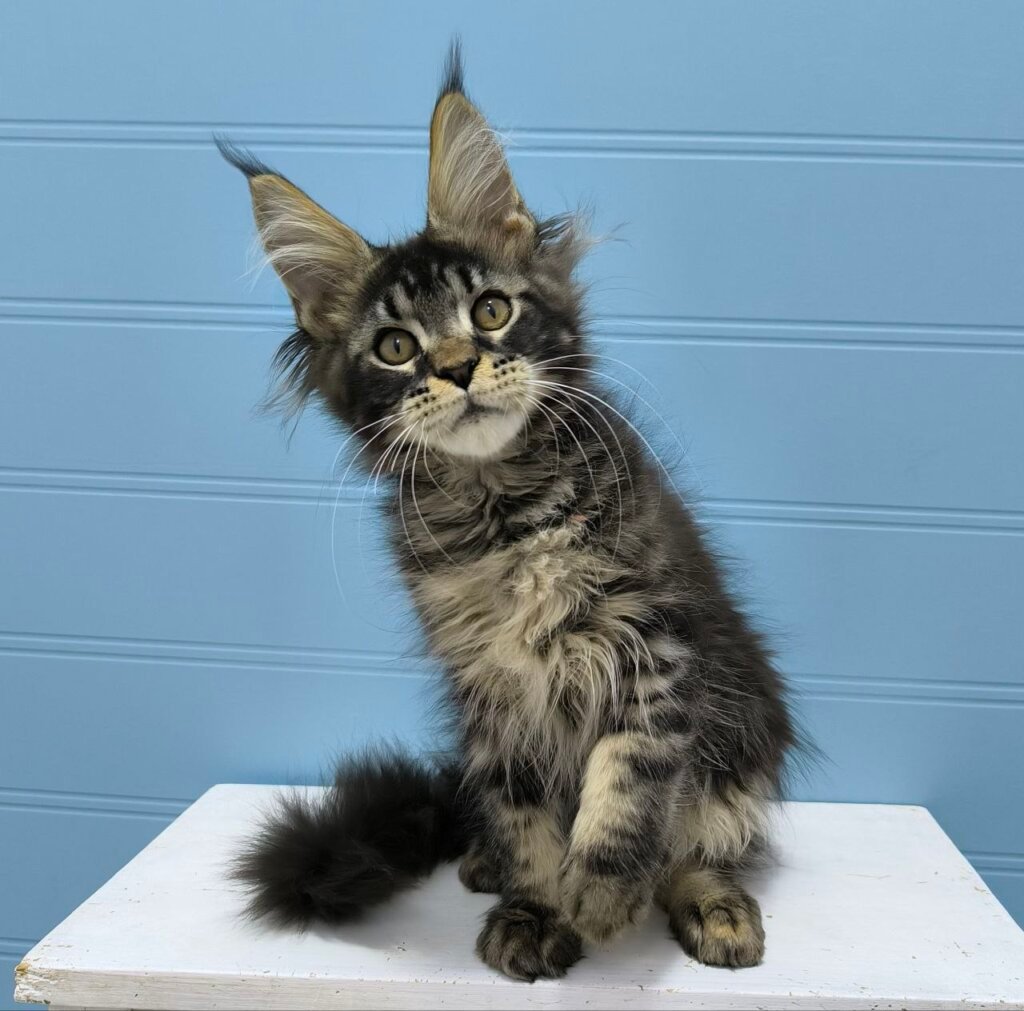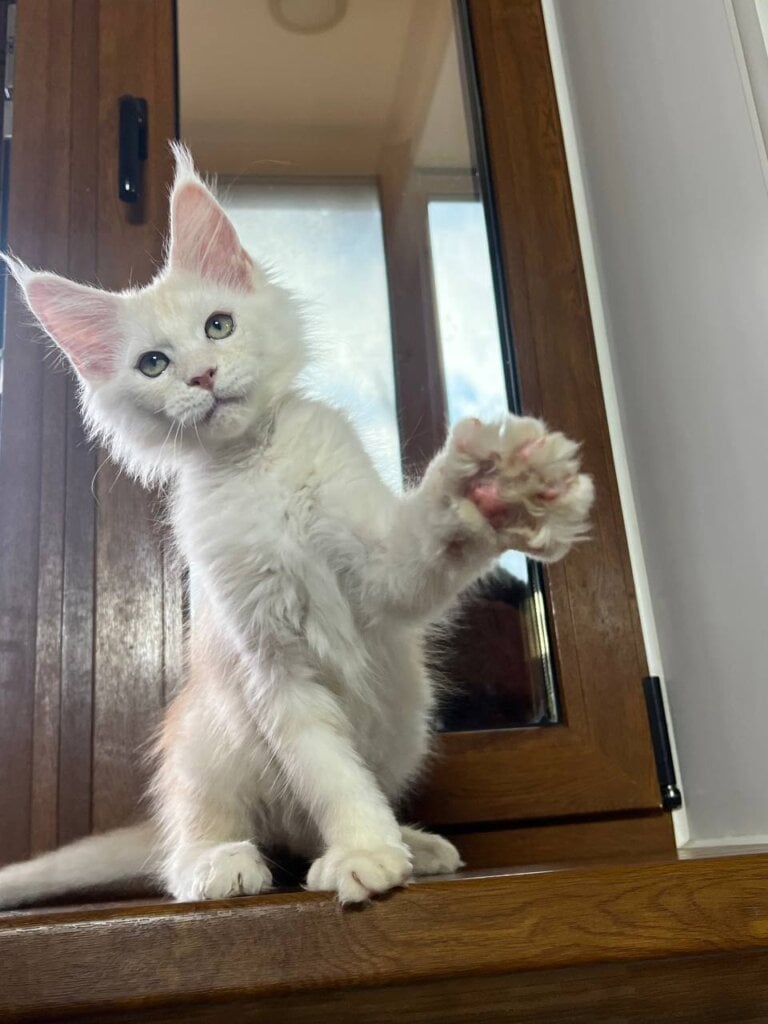- Maine Coons may have green or gold eyes, with blue and copper common in white cats. Some even show off extremely rare and unique eyes, like odd-colored ones which only make them more enchanting.
- Kittens are born with bright blue eyes. As they reach maturity, those blue eyes slowly transition to their final color, often becoming set by the time they reach adulthood.
- Genetics is the biggest factor in eye color. Contributing factors Coat color, as well as dilution genes, can affect the resulting eye hue for a Maine Coon.
- Breed standards look for the brightest of eye colors that contrast and enhance the coat’s beauty. They similarly frown on sad or shifty shades.
- Eye color may vary slightly with age, health, or environmental factors. That’s why routine veterinary examinations are so important to identify problems before they become serious.
- Traits like heterochromia and others unusual features just add to the mystique of Maine Coons. We can never lose sight of the fact that ethical breeding always comes first.
Maine Coon eye colors can range from shades of green, gold, and copper to blue, with odd-eyed Maine Coons having one blue eye and one of another color. These mesmerizing eye colors only enhance their royal looks, usually mimicking their quirky, clever personalities.
We make sure all of our Maine Coon kittens get their parent’s genetics of good health and beautiful qualities. To their new families, each strikingly beautiful and distinctively patterned kitten imbues homes with their loving, gentle nature.
Maine Coon Eye Color Spectrum
Maine Coons are adored for their eye beauty. These mesmerizing collective traits increase their luxurious appearance and place emphasis on their curious and cunning nature. Their eyes are wonderfully big and expressive, giving them an enchanting gaze that is unparalleled among other breeds.
Fun Fact: Did you know that a cat’s eyes are about 50% larger than human eyes relative to their head size? This creates a unique gaze that’s more pronounced and captivating! For Maine Coons, their eye color spectrum is as fascinating as their overall appearance, reflecting a variety of genetic influences that result in an incredible range of hues.
What Colors Are Possible?
The Maine Coon eye color spectrum is indeed wide, providing a color spectrum as varied as the breed itself. The typical colors are brilliant gold, copper, and even green in some cases, adding both warmth and depth to the cat’s expression.
More rare, blue eyes are usually found in white Maine Coons or those with the dominant white gene. One more mesmerizing variation is heterochromia. In the case of odd-eyed cats, each eye shows a different color, as in one blue and one green.
These unique combinations are often indicative of the cat’s quirky personality, further distinguishing each Maine Coon cat from one another. Genetics play the biggest role in eye color. The options are still quite a mixed bag, which only increases the breed’s charm.
Eye Color Development in Kittens
Maine Coon kittens begin their lives with blue eyes, which shift in hue as they grow older. Between 6-8 weeks of age, the eye color starts to change, determined by the amount of melanin produced and genetic factors.
By the time they get to 3-4 months you can see their permanent eye color. Surprisingly, even kittens from the same litter may have entirely distinct eye colors. This change is always a thrilling experience from the owner’s perspective, watching the kittens develop their distinctive, adult look.
Rare and Unique Eye Colors
Uncommon eye colors, particularly rich copper or vivid emerald green, are considered highly desirable by Maine Coon aficionados. While these more unusual yet striking colors tend to be less prevalent, they are usually linked to a certain lineage or breeding practice.
Odd-eyed Maine Coons, while rarer, are especially loved for their unique and memorable look.
Genetics of Maine Coon Eye Color
Maine Coon cats often show a stunning diversity of eye color, influenced by complex genetic mechanisms. By understanding these genetics we can understand why their eye colors are so varied and how they change over time. Maine Coon kittens are born with gorgeous blue eyes.
As they grow up, their eye colors develop into a vibrant spectacle of pigments, living evidence of the extraordinary relationship between biology and beauty.
1. Understand Basic Feline Genetics
Like all kittens, all Maine Coons are born with blue eyes! This first blue color is a result of the absence of pigmentation mechanisms in their irises at birth. During their first few months, as melanin matures, their definitive eye color is exposed.
Basic feline genetics generally centers around dominant vs recessive traits. This implies that traits, like eye color, are determined by the way genes are passed down from both parents. Though recessive traits are rarer, they can show back up after one or more generations have passed. That’s what makes the genetic lineage of a Maine Coon so interesting!
2. Genes Influencing Eye Color
Like all cats, eye color in Maine Coons is under multiple genetic control, where different combinations of genes either express or suppress melanin production within the iris. High melanin concentration produces darker colours such as amber or gold.
Conversely, melanin in lower amounts creates paler colors like green or yellow. The situation deepens further with traits such as the Dominant Blue Eye (DBE) gene, which is considered a rare occurrence in Maine Coons. Approximately 60% of DBE Maine Coons are able to have their trait lineage traced to a known genetic source.
Yet it frequently introduces associated problems such as partial or total deafness.
3. How Coat Color Impacts Eye Color
As it turns out, coat color and eye color can occasionally have overlapping genetic connections. Notably, white or lighter-coated Maine Coons are more likely to show the DBE phenotype.
DBE Maine Coons don’t conform to the traditional color standards of their breed. This is due to the fact that the gene responsible for their truly unique colors is a polygenic trait.
4. Dilution Genes and Their Effects
Other genes, called dilution genes, play a role by lightening the richness of pigments, affecting both coat and eye colors. A diluted coat color, like cream or light gray, will often highlight the respective paler eye colors like pale green or pale yellow, respectively.
This combination provides a fascinating level of diversity to Maine Coons’ looks.
5. Eye Color Inheritance Patterns
Eye color inheritance in Maine Coons follows general inheritance patterns determined by dominant and recessive alleles. Green, yellow, and amber pigments are most prevalent in the breed.
The special DBE gene diffuses slowly, saturating its respective population genetic diversity.
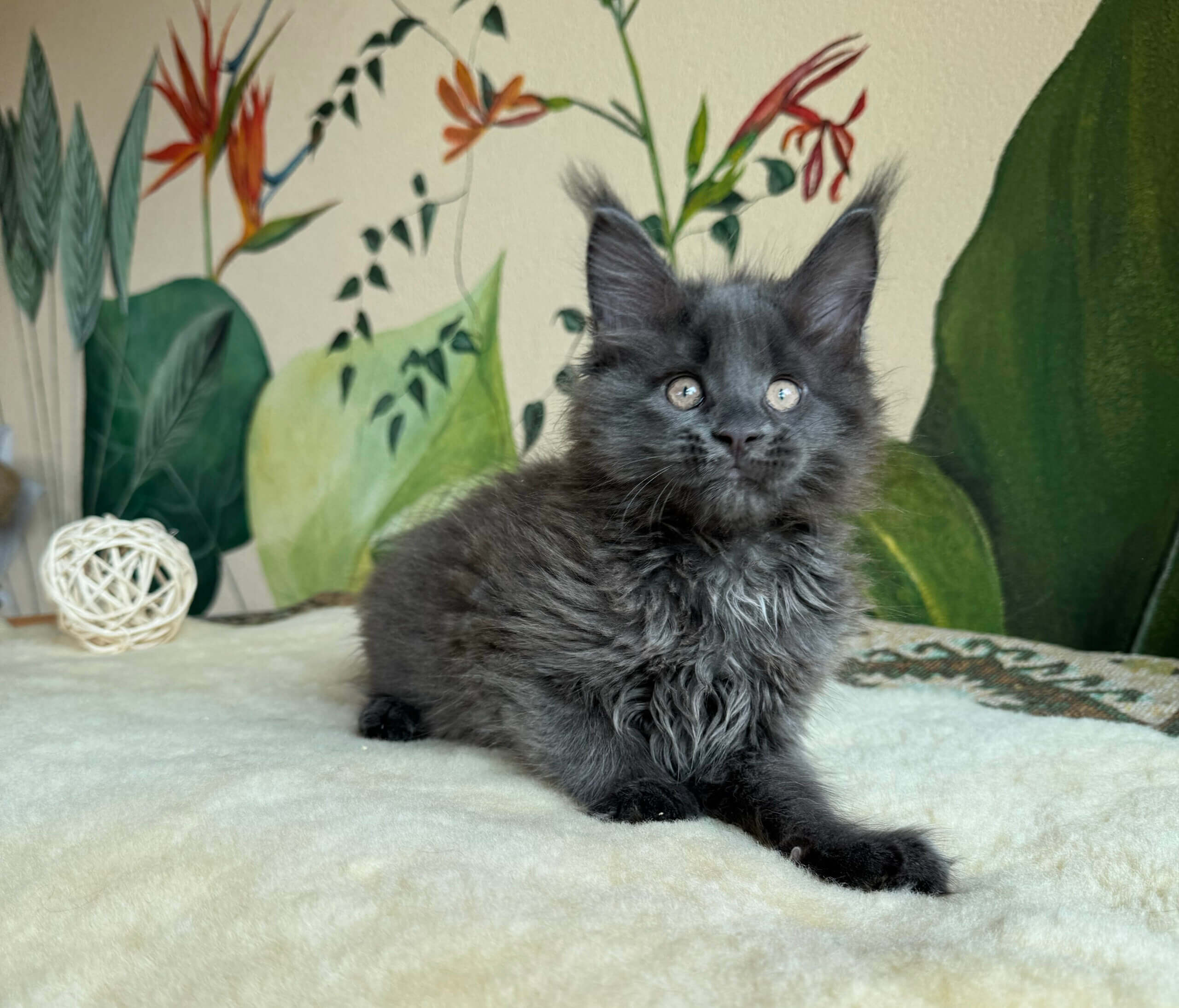
Maine Coon Eye Color Standards
Maine Coon cats are known world-wide for their grandeur. Their amazing, hypnotic eyes are usually one feature most people notice first. Eye color in Maine Coons is more than just a stunning aesthetic. Sticking to health-focused regulations helps ensure we’re meeting vital breed standards like eye color. The breed has the full spectrum of eye colors on brilliant display. Not all shades are created equally, some are more coveted than others. The ability to notice the variation showcases their rare beauty.
Desirable Eye Colors
The most desirable Maine Coon eye colors are green, gold, and amber shades. These pigments play a key role in completing the cat’s regal, mystical, and enchanting appearance. Green eyes, from pale to deep emerald, are particularly salivated over. Their wide-set eyes accentuate their impressive features and help create the beautiful contrast of a Maine Coon’s furry, tufted coat.
Gold and amber hues are radiant, frequently with copper or metallic hues. These colors are just as attractive, giving them a luminous, ember-like quality to their view. Yellow eyes in Maine Coons might not seem uncommon at first. Nonetheless, these cats frequently exhibit tones such as copper or gold, which lend intensity and warmth to their eye color.
It’s no surprise these cats have eye colors that gracefully change in various lighting, adding to their beauty. Maine Coons may show orange shades, although these are rarer than the more typical green or golden hues.
Undesirable Eye Colors
For Maine Coons, in general, undesirable eye colors include any that stray too far from the breed standard or lack vibrancy. Natural heterochromia iridium, in which one eye is blue and the other is pigmented, is very rare and remarkable. Sometimes odd eyes, each eye a different color like blue and copper, attract the most attention.
However, this wouldn’t meet standard breed favoritism. These uncommon characteristics, while stunning, are more rarely up to competitive show standards.
Breed Standard Considerations
The Maine Coon breed standard calls for eyes that are large, expressive, and slightly almond-shaped. Kittens, like most felines, are born with blue eyes, but these will change as the kittens grow and eventually fade to their adult color.
Though this transition into color may be confusing, it is a normal part of their development and offers a hint at their future adult look.
Eye Color Changes Over Time
Maine Coon kittens are easily one of the most captivating breeds, but one of their most endearing attributes is their eye color. At birth, all Maine Coon kittens share a common trait: their eyes are a soft, uniform blue. This first eye color isn’t fixed and tends to change as they develop.
DIGGING DEEPER Understanding what causes this change helps to explain why no two Maine Coons are alike. This is equally important for our ability to answer scientific questions regarding their development.
Factors Influencing Color Change
Genetics, ageing and pigmentation straight up determine baby blue eyes changing color to something else. These can be notably as green, golden or copper. Specifically, the genetic information passed on from their mom and dad largely decides what shade they end up being.
Some Maine Coons will keep traces of blue, while other cats get bright green or coppery colors. This uniqueness is a large part of what makes each cat so special. The level of saturation of the color is greatly influenced by the amount of melanin found in the iris. High concentrations of melanin produce more intense colors such as deep, dark copper. Conversely, less melanin can lead to darker green shades.
Things that are beyond our control, such as lighting conditions, seriously affect how we perceive a cat’s eye color. Even slight changes to their environment can affect how we perceive them. Although such temporary changes in appearance may be seen depending on the lighting, this does not represent true changes in the color of the pigment.
When Does Color Stabilize?
Usually, the eye color of Maine Coon kittens starts to shift between 6 and 8 weeks old. It’s an unlikely metamorphosis that never happens overnight. Around the time the kitty reaches 3 to 4 months, their eye color would start to settle into a more permanent hue.
Stabilization can, in some instances, take a year or more. Kittens – all of them – experience a change in their appearance as they mature. There’s no promise of the eventual color, which introduces a thrilling dash of chance to their creation.
Health and Environmental Effects
In some cases, health issues or environmental elements may affect how your eyes look. External factors, for instance, infections or irritants, may result in temporary redness or cloudiness, but they do not change the stable color.
Timely professional intervention should be able to solve most of these problems without radically changing their aesthetic character.

Eye Color and Health
Maine Coon cats are known for having large and beautiful eyes that enrapture those lucky enough to own one. This unusual characteristic makes them different from all other breeds. On top of that, their eyes are 50% larger than human eyes relative to head size.
They present a rich panoply of hues that tell us about their well-being. Their distinctive eye aesthetic is not just a marker of beauty but is inextricably tied with their complex genetics. In some situations, it can even help uncover information about their long-term health.
Potential Health Issues
Maine Coons, like all breeds, are prone to a variety of hereditary health conditions. Hypertrophic cardiomyopathy (HCM) is the most common inherited cardiac disease. Its central impact is on the heart.
It can cause secondary complications in the eyes, leading to long-term problems such as retinal detachment or even vision loss. Hip dysplasia, present in at least 37% of Maine Coons, may seem unrelated to the eyes but serves as a reminder of how genetic health issues can manifest in unexpected ways.
Eye health in Maine Coons can reflect more widespread systemic issues, which is why it’s so important for owners to keep a watchful eye on their cat’s health.
Eye Color-Related Conditions
Maine Coons have beautiful eye colors that range from a rich golden to copper shades. These amazing colors are equally a genetic wonder and an important sign of their health. This rare coloring is due to the complex interplay between coat color genes and eye color genes.
These genes influence the way light scatters off the iris. Other owners might realize that their cats’ eyes appear to change color depending on the lighting, which is normal in cats. Obvious or sudden changes in color may indicate serious conditions like uveitis or glaucoma.
Some shades of eye color are similarly associated with a greater risk of some health issues. As an example, if you have lighter eye colors, you might be susceptible to sensitivity or irritation. Keeping an eye on the clarity and color of their eyes can help you notice early signs of trouble before serious problems develop.
Importance of Regular Checkups
Annual veterinary examinations are essential for spotting and treating eye issues early on before they become more serious conditions. A veterinarian will be able to diagnose your cat’s eye health.
They are often the first to pick up on systemic disease that present with ocular manifestations. Early detection allows conditions like HCM or glaucoma to be treated more effectively, maintaining your cat’s long-term quality of life.
Maine Coon Eye Color Oddities
Maine Coons are well loved for their exotic physical characteristics, and their eye colors are no different. Though golden, green, and copper are standard colors, some Maine Coons have eye color that is downright bizarre. These fascinating characteristics not only enhance their mythical allure, but spark interest in the genetic causes that underlie them.
Heterochromia Explained
Heterochromia, or being born with two differently colored eyes, is one of the most enchanting features exhibited in Maine Coons. This happens when melanin – the pigment that affects the color of your eyes – is deposited irregularly across the two eyes. A Maine Coon with heterochromia can have one bright blue eye and the other in gold or green.
This intriguing phenomenon occurs due to genetic mosaicism, a rare occurrence forged in the womb when some genes express differently in one eye than the other. Heterochromia is most often seen in Maine Coons with a white coat or that carry the white spotting gene. This happens because the white gene can suppress melanin production in one eye, creating the stunning blue-orange contrast.
Heterochromia isn’t just reserved for white-coated cats and can sometimes be found in Maine Coons of any other color coat. Coat aside, these cats are just as healthy as any other Maine Coon, with no vision problems associated with this anomaly.
Other Unusual Variations
Maine Coons could show other incredible eye color oddities than heterochromia. One example of this is Dominant Blue Eyes (DBE). Until 2015, DBE was thought to be virtually non-existent in Maine Coons. Since 2020 it’s become wildly popular among breeders.
This pattern is consistent with current research, which has associated over 10 genetic mutations with DBE. These results suggest that DBE is a polygenic characteristic. It is the effect of multiple genes, not the effect of one specific mutation.
DBE in Maine Coons is particularly interesting because it acts regardless of coat color. It further doesn’t relate to coat patterns like tabby or solid. Thus only an estimated 1-2% of Maine Coons possess DBE. People appear to be obsessed with this oddity, making the trait highly desired by specific breeders and owners.
Though DBE can be attractive, it is not necessary to fulfill breed standards. No matter what eye colors these cats come to possess, they do tend to live very happy and healthy lives.
Debunking Eye Color Myths
As far as Maine Coon cat eye colors go, many people have questions and may even buy into the myths. We all know that these beautiful animals are hard to resist with their soulful, spectacular eyes, but it’s time to cut through the eye color myths. Understanding the science behind their eye colors only deepens our admiration. It makes us better equipped to truly care for them.
Common Misconceptions
This has led to a very scary misconception – that blue-eyed Maine Coon cats are automatically rare or exotic! Blue eyes are commonly seen in bicolor Maine Coons. This rare eye color only happens when the fur around their eyes is white. This feature connects to genetics instead of scarcity.
Likewise, most think that copper-colored eyes are a rarity or associated with medical conditions. Copper eyes are perfectly normal in some cat breeds, like the British Shorthair. You can see these in Maine Coons.
A second myth has to do with cross-eyed or odd-colored eyes. Though very unusual, this is by no means limited to one breed. It has been suggested at times to be related to pigmentation variations rather than being a characteristic exclusive to the Maine Coons.
There’s the idea that a cat’s eye color never changes. While kittens may develop different eye colors after six weeks, any sudden change in an adult cat’s eye color should warrant a veterinary check-up, as it could indicate underlying medical concerns.
What Research Says
Melanin plays an important role in eye development and pigmentation. Maine Coons commonly exhibit striking green or copper eyes. These hues are medical/health conditions that affect melanin activity, with blue and green eyes having significantly lower levels of melanin.
This is why irises in yellow or orange tones frequently look the brightest. Maine Coons can range from green to green-gold, to gold to copper eye color. These beautiful colors have a lot to do with their genetics, and how they are in accordance to their breed standard.
Kittens are born with their eyes shut except for the pupil which is open. They begin to open their eyes between 8-12 days of age. By six weeks, their eye color will have changed, showing you what it will be for the long haul.
White cats with two blue eyes are almost always born deaf. They are statistically at least three to five times more likely to be deaf than white cats with non-blue eyes.
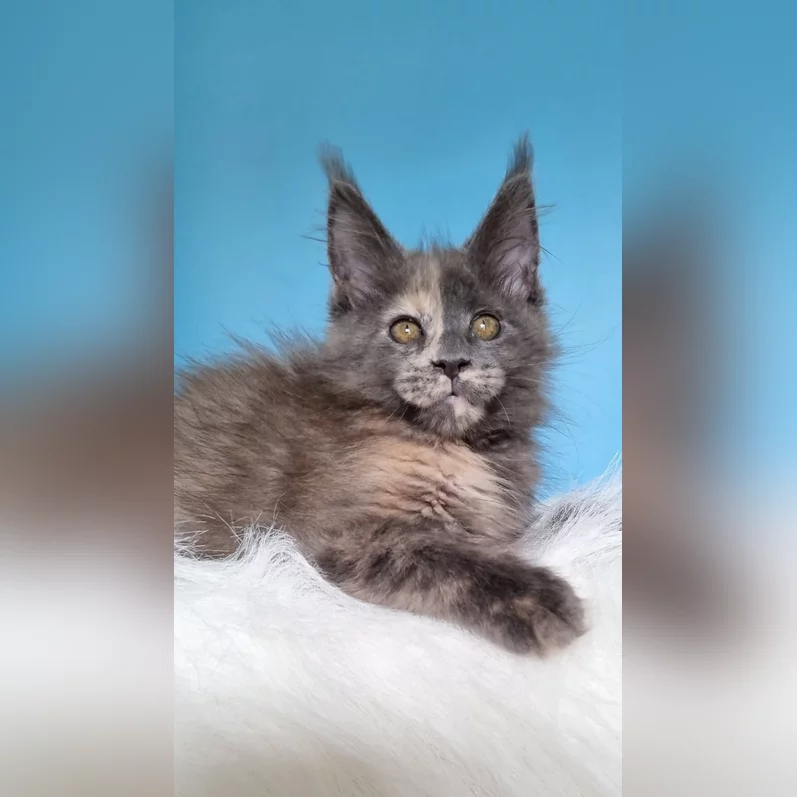
Breeding for Eye Color
Because Maine Coons are famous for their exotic looks, eye color goes a long way in what makes this breed so enticing. In the breed standard, typically encompassing a wide range of natural eye colors – green, gold, and copper amber sapphire blue – are seen. Breeding for special eye colors, particularly with Dominant Blue Eyes (DBE), has created a stir of both excitement and outrage. A look at the perspectives of breeders and the ethical considerations at play gives a fuller picture of this practice.
Breeder Perspectives
The movement to breed Maine Coons with DBE started picking up steam around 2020. Prior to then, it happened only in exceptional instances. DBE is not a characteristic commonly found in Maine Coons. It has been brought into its gene pool through crossbreeding with other breeds like Topaz cats. As a result, the demand for these rare-eyed cats has increased dramatically.
This booming market has left great potential for breeders to help fulfill this niche market. Yet, this process is anything but simple. Breeders have difficulty breeding for DBE traits. Breeding for DBE phenotypes comes with its own challenges. The scientific literature has reported three stillborn kittens out of eight litters bred specifically for DBE.
They reported that these affected kittens presented with severe clinical signs, including jaundice, abdominal distention, spasms, dehydration and cranial deformities. These complications underscore the danger that can arise from genetic manipulation. Maine Coon kittens with DBE will go on to lose hearing or become fully deaf. This adds to the myriad health concerns that breeders should be walking the tightrope around.
For one thing, it must be emphasized that DBE Maine Coons are not breed standard according to the accepted breed standards for eye color. This cyclonic shift has led to contentious discussions within the breeding community about the legitimacy and even the morality of such work. Over 10 different DBE mutations have been identified, confirming that this eye color trait is not caused by a single gene but a complex genetic foundation.
Responsible breeders should be conscientious of the long-term effects of adding DBE to their breeding program.
Ethical Considerations
Ethical concerns surrounding DBE breeding go beyond health hazards. Crossbreeding in pursuit of this trait would be problematic, as it would compromise the purity of the Maine Coon line. Some breeders have gone so far as to be accused of creating fake pedigrees to bring in DBE traits.
To prevent the spread of genetic defects, responsible breeders value transparency and do not cross various DBE Maine Coons.
Maine Coon Eye Color vs. Other Breeds
Maine Coons are perhaps best known for their strikingly large frames and their extravagantly fluffy fur coats. Of course, their exceptional eye colors help separate them from other breeds too. Their eyes can be an enchanting mix of golden warm tones and vivid green. Some even have rare combinations like odd eyes, making them a fascinating candidate for comparison and genetic exploration.
Breed Comparisons
Maine Coons have an increased occurrence of green and gold eye colors when compared to other breeds. These colors aren’t uncommon in domestic cats. None are more vivid than in Maine Coons which gives these cats a special appeal. For example, gold and green-eyed Maine Coons usually show more vibrant hues, underlining their wild, almost fantastical look.
Breeds such as the Siamese and Burmese often have vivid blue eyes due to their breeding. This contrasts sharply with the British Shorthair, known for having striking copper- or orange-hued eyes. In fact, blue eyes are extremely rare in Maine Coons. You will only find them in pure white cats or those with bicolor coats that have extensive white spotting around the eyes.
In such circumstances, the genetic effect of that white coat leads to beautiful blue eyes. In some cases, it can even cause heterochromia iridium, a condition where one eye is blue and the other is gold or green. As this is a very rare condition, even among this breed, it enhances their appeal when seen. Unlike Maine Coons, other breeds known for having odd eyes, like Turkish Angoras, show this trait at a higher frequency. This is the result of a number of genetic causes.
Genetic Differences
As in most breeds, Maine Coon eye colors are entirely determined by their genetics, in which pigmentation has a large part. Some gold or yellow-eyed Maine Coons have an impressive metallic sheen to their fur. This special combination is due to the copper tones mixing in with their natural colors to create a luminous and shimmery quality.
This subtle metallic effect, called “tipping,” is unique to the Maine Coons, a feature that is almost never found among any other breed. The genetic propensities in Maine Coons go beyond looks. They’re at a marginally increased risk of developing cataracts, which can cloud their vision as they age. This is not specifically related to eye color.
It does point to the importance of health testing to preserve and improve the breed’s health. Efforts are ongoing to address genetic conditions like hip dysplasia, which impacts nearly 37% of Maine Coons, ensuring their health alongside their beauty.
Environmental Factors and Eye Color
When we talk about Maine Coon cats, it’s hard not to get excited at their beautiful eye colors. Ranch diameter played a role in confirming phenotypic characteristics. Environmental factors greatly shape a variety of physical characteristics in this breed. Eye color is influenced largely by genetic makeup.
Maine Coons are famous for being able to survive in cold climates, but their eye colors are not affected by such environmental extremes. Here are a few of those factors, and what they mean beyond eye color.
Diet and Hydration
The Maine Coon’s health largely relies on a proper diet and a healthy water intake. A balanced diet will keep their fur healthy and smooth, and their immune system working effectively. Diet affects color saturation in fur and the intensity of claws.
That doesn’t control the pigmentation or translucency of eye color. Even the most quality of diets rich in omega-3 fatty acids and vitamins can’t alter the eye colors of Maine Coons. All of those beautiful golden or emerald colors are still there, even with the nutrition inside. Rather, these hues are completely determined by heredity.
Hydration, vital not only for kidney function but general well-being and vitality, is another important facet of their care. Environmental effects Renal cysts are not especially common in the Maine Coon. They seldom encounter wrongly ascribed worries such as polycystic kidney disease (PKD).
Keeping them healthy through proper hydration will keep them healthy for a long time, but won’t change their eye color.
Sunlight Exposure
The glorious mane of a Maine Coon is just another example of the breed’s development, adapting to environmental factors. Sunlight exposure can affect the texture and shedding of their fur, especially while growing in and shedding seasonal pelage.
Take, for example, their body fur – in winter, that hair gets long, thick, and fluffy, while the summer months produce a short, smooth, sleek coat. Even so, environmental factors such as exposure to sunlight do not affect their eye color.
Interestingly, most Maine Coon cats exhibit eye colors that do not change as they age. Unlike other animals, their eye coloration does not change with changing light conditions. Their size and heavy coat allows them to thrive in Maine’s harsh climate.
There is no relationship between these characteristics and eye color. Genetics is the secret to their mesmerizing peepers.
Documenting Eye Color
When it comes to documenting a Maine Coon’s eye color, specificity is important. One of the most captivating features of Maine Coons is their strikingly diverse eye colors. You’ll get greens, gold, deep copper, and even magical blue in those with certain coat patterns.
Capturing and describing these colors effectively allows us to preserve their unique traits and helps prospective owners understand the beauty of their potential companion. Below, we explore two essential aspects: taking good photos and describing eye color accurately.
Taking Good Photos
Well-lit and clear photos are the best starting point for displaying a Maine Coon’s incredible eye color. Lighting is where the magic happens in truly showcasing the depth and vibrant colors within their eyes. Natural light is ideal, particularly in the early morning or late afternoon when light is at its most warm and diffused.
Positioning the cat near a window can highlight the nuances in their eye color without harsh shadows or artificial glare. The angle matters just as much, if not more.
- Maintain an eye-level position. Keeping the camera at the same level as your cat will help create a clear, direct look into their eyes. Do not use angles that will distort the shape of the eye or make the color look faded.
Ensure the environment is peaceful, familiar, and overall stress-free for your cat. Or maybe stress creates subtle changes in their pupils that change the way their eye color comes across on camera.
A green-eyed Maine Coon can really display a beautiful array of greenish hues. Under the right light and angle, those colors can change from pale jade to rich emerald. Capturing these variations only adds richness to the documentation and provides a truly accurate portrayal of the beauty of their gaze.
Describing Eye Color Accurately
To confirm a true Maine Coon’s eye color, you need to focus on the subtle difference between colors. Instead of generalizing with basic terms like “green” or “gold,” using specific descriptors can help others visualize the exact shade.
A cool green matches the depth of color found in newly budding leaves. In the photograph above, a warm golden color looks like honey in the sun’s light. By including such relatable comparisons, it paints a magnificent picture for the reader.
If there are any interesting features, like a ring of a secondary color around the pupil, describing them adds to the detail. Blue eyes in Maine Coons are enchanting. They can vary from very cool hues to a deep, ocean blue, mainly in white or bi-color forms.


